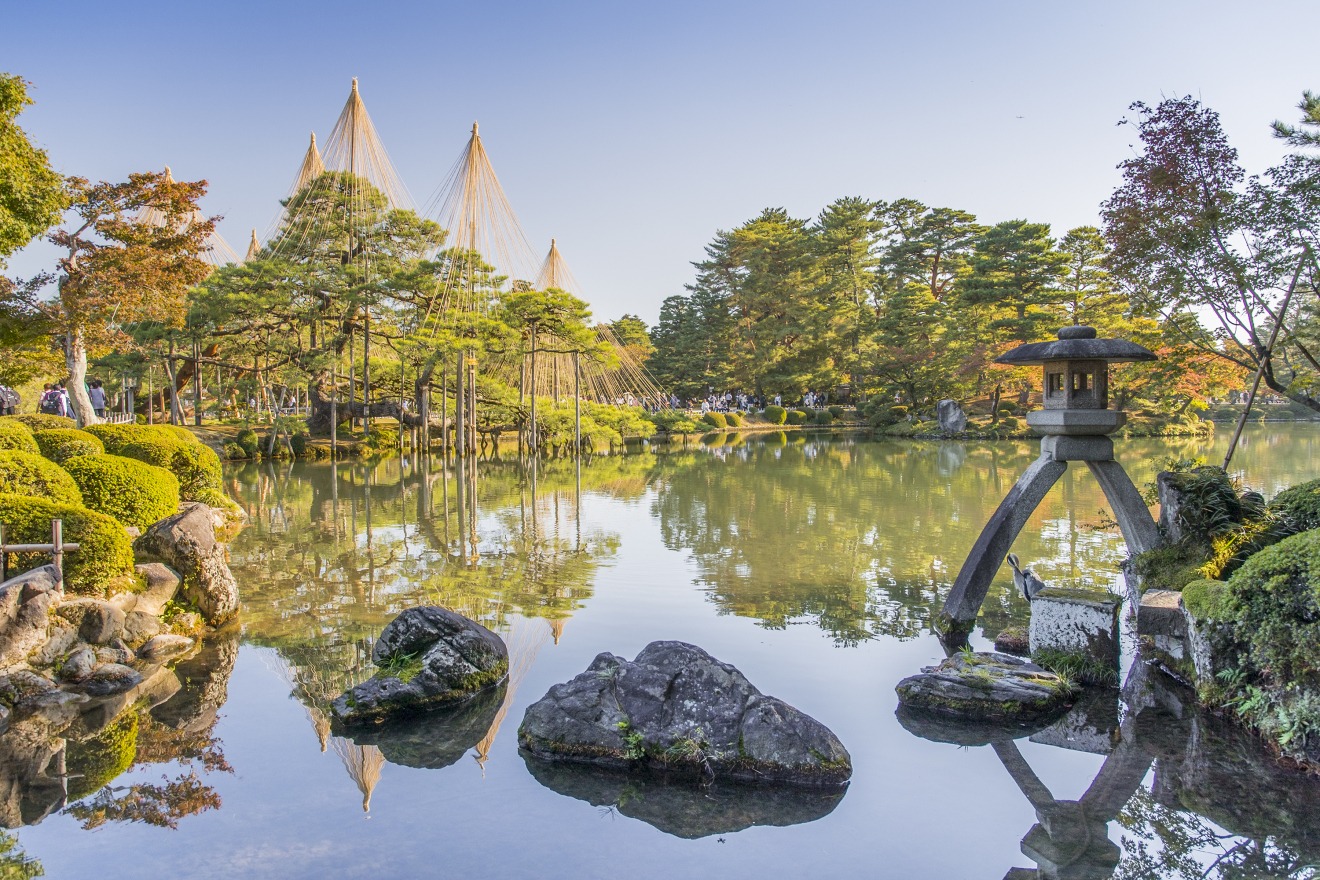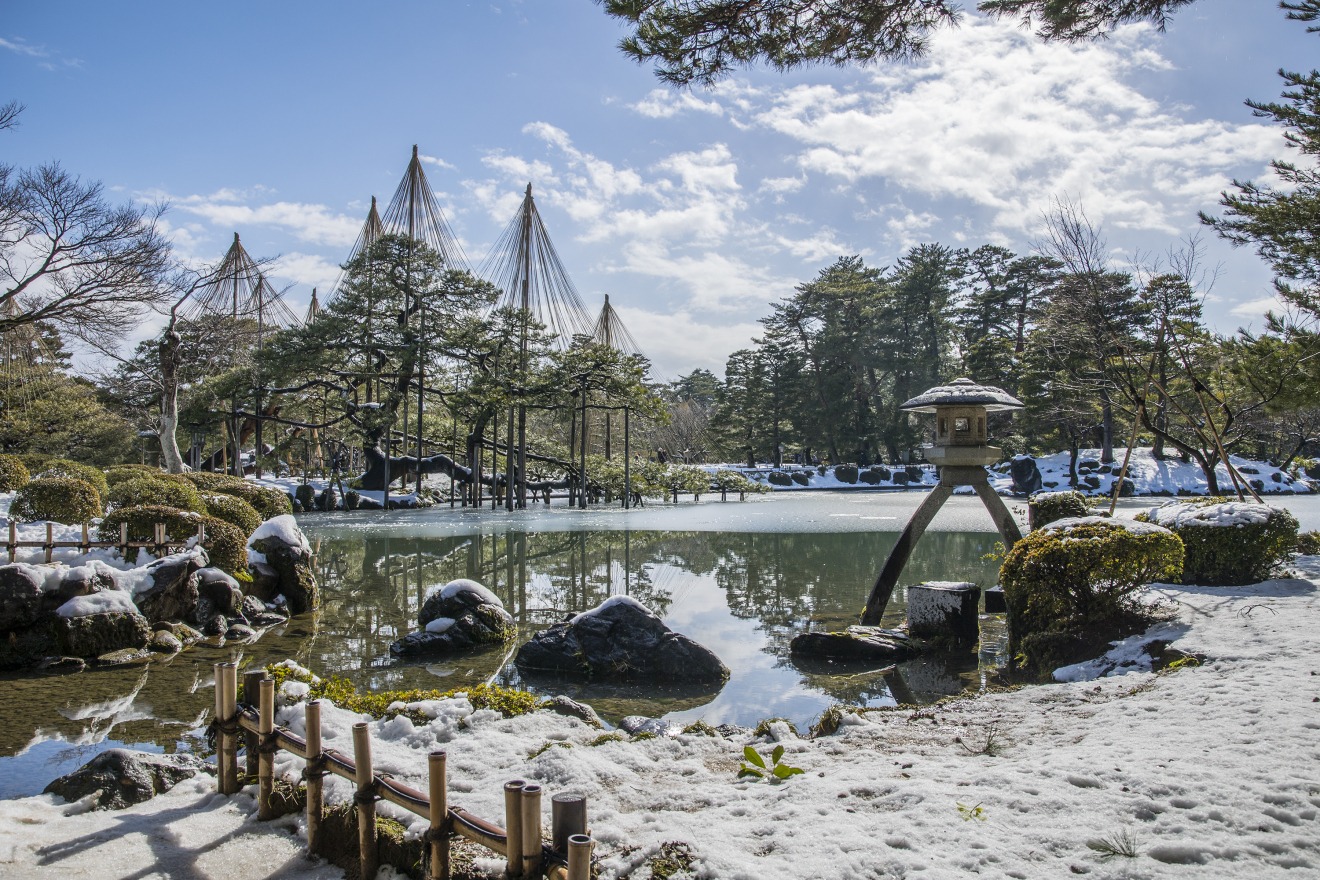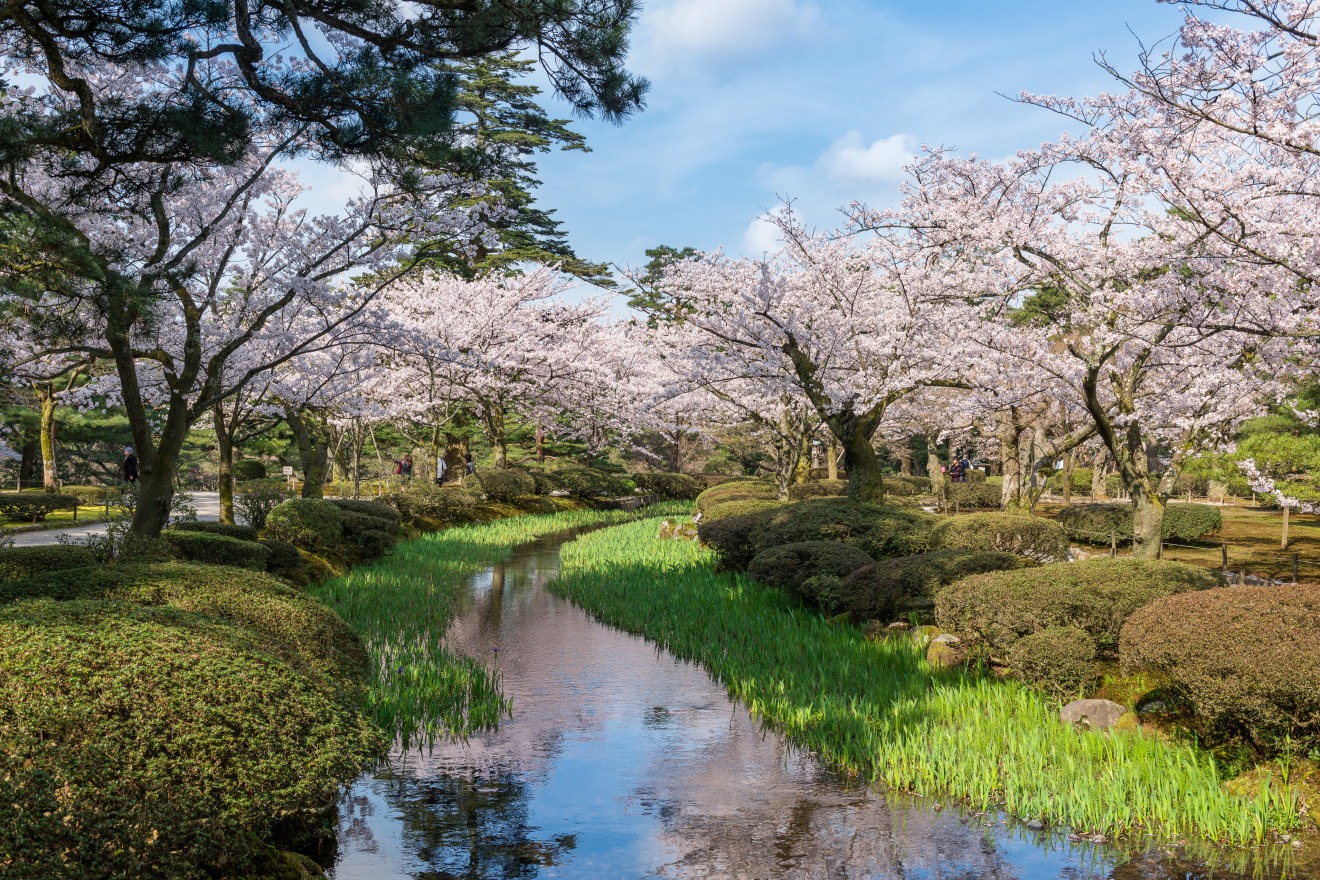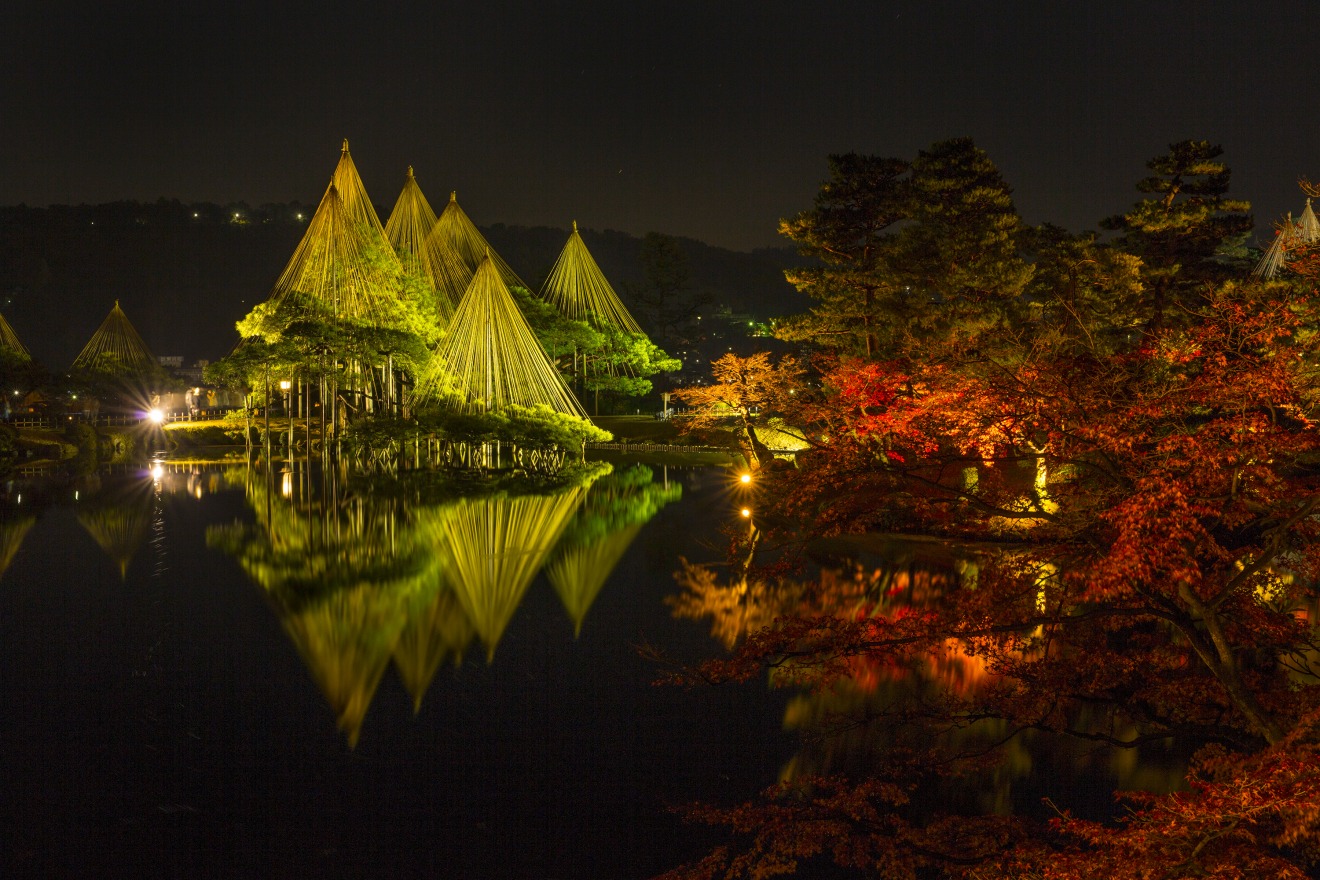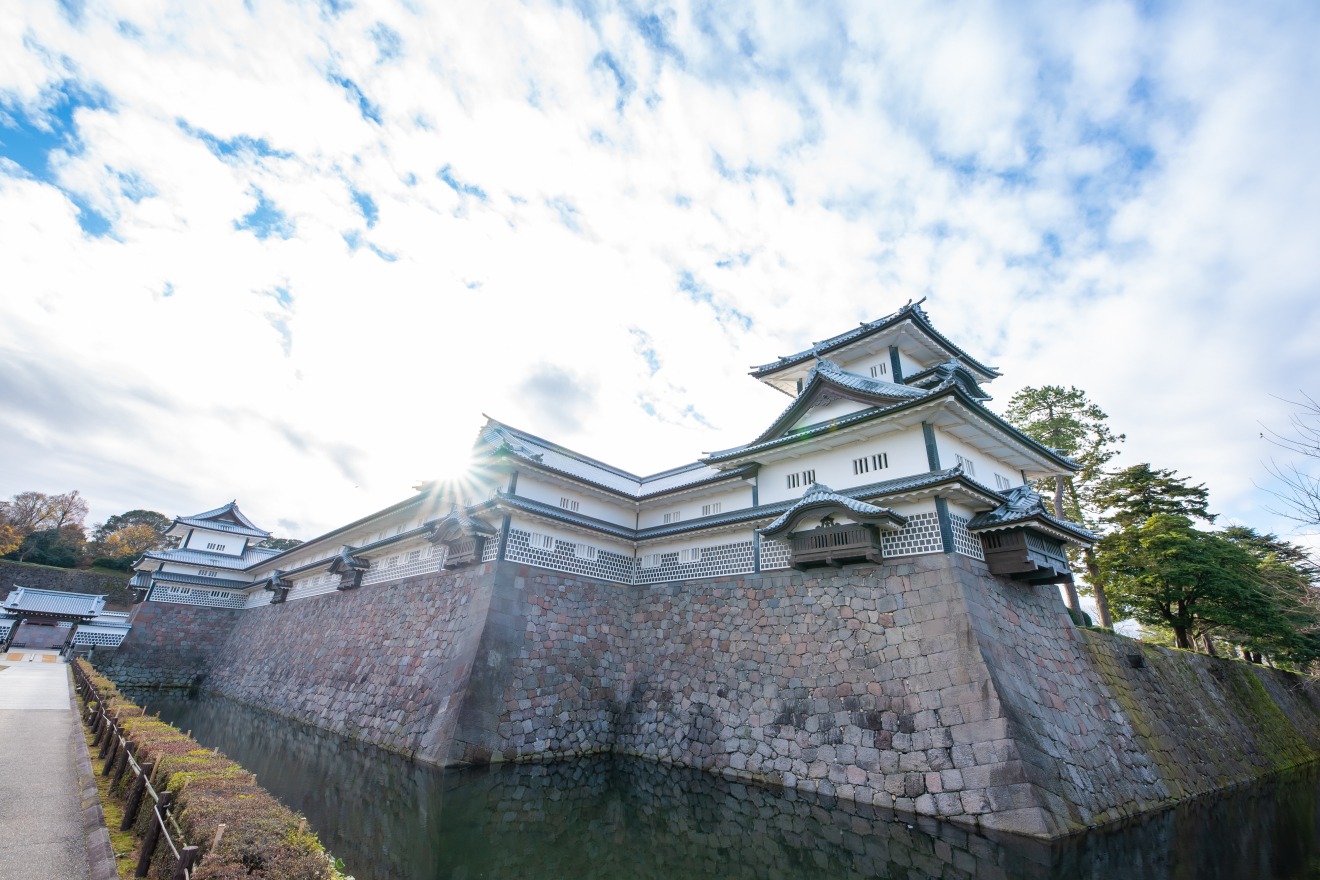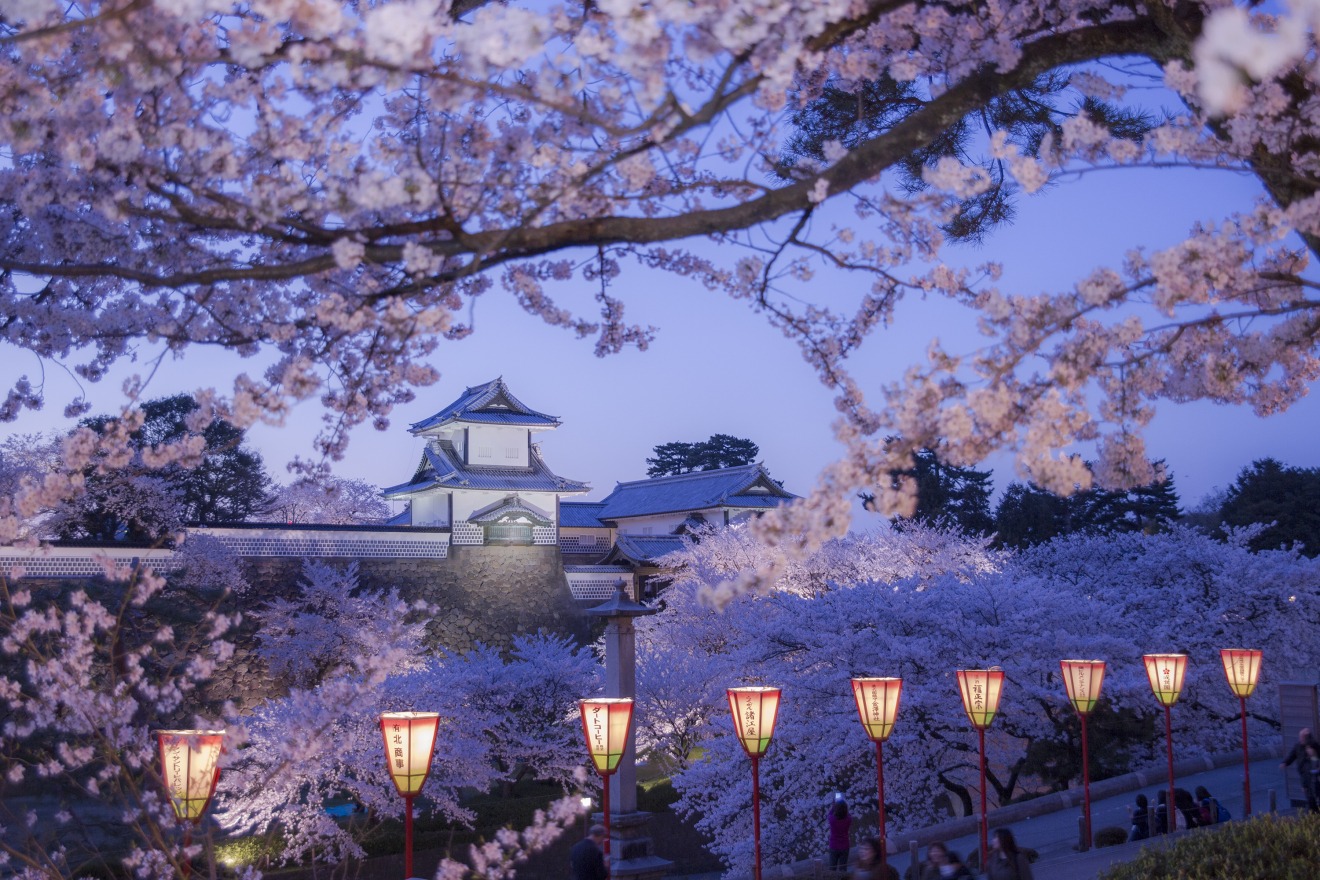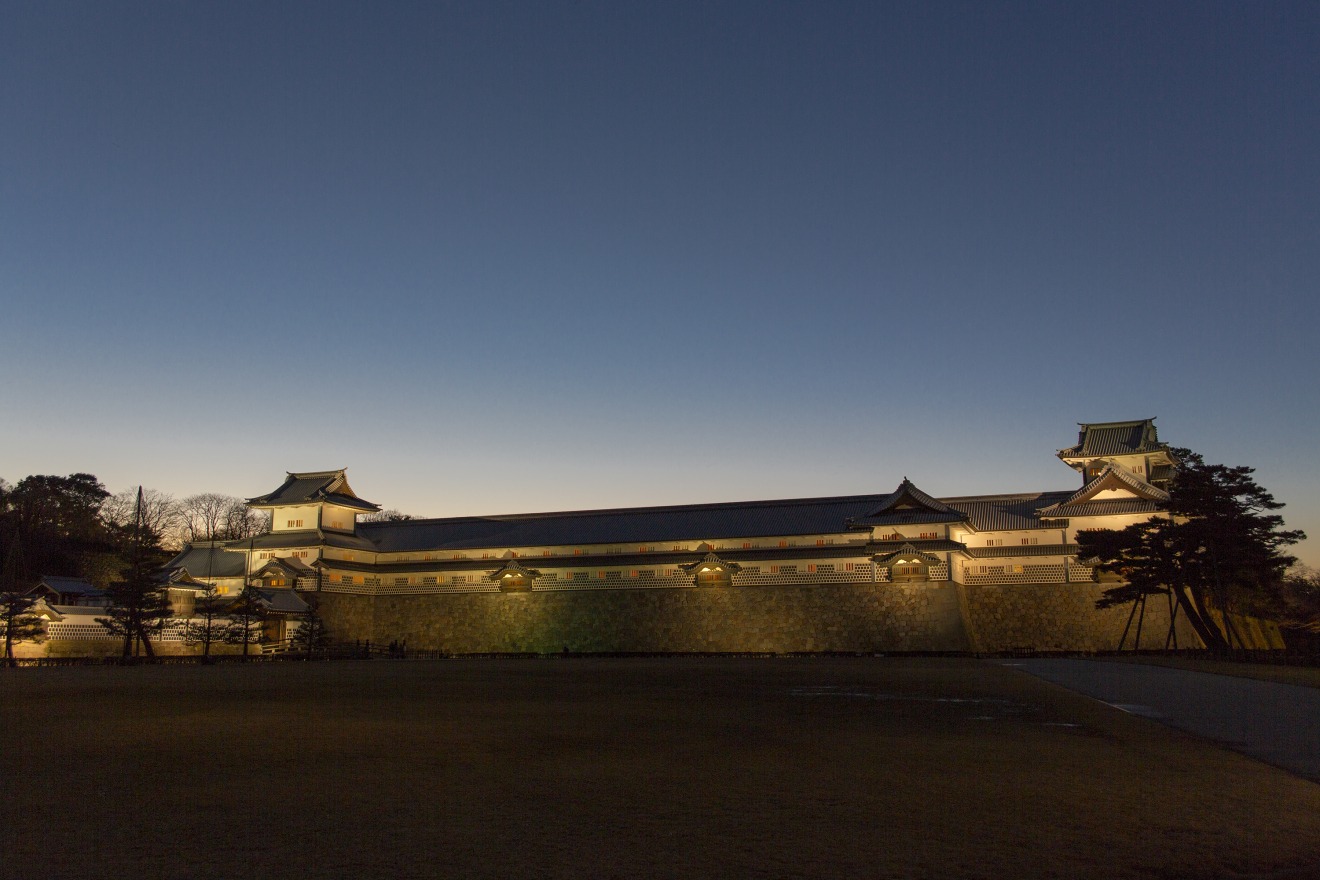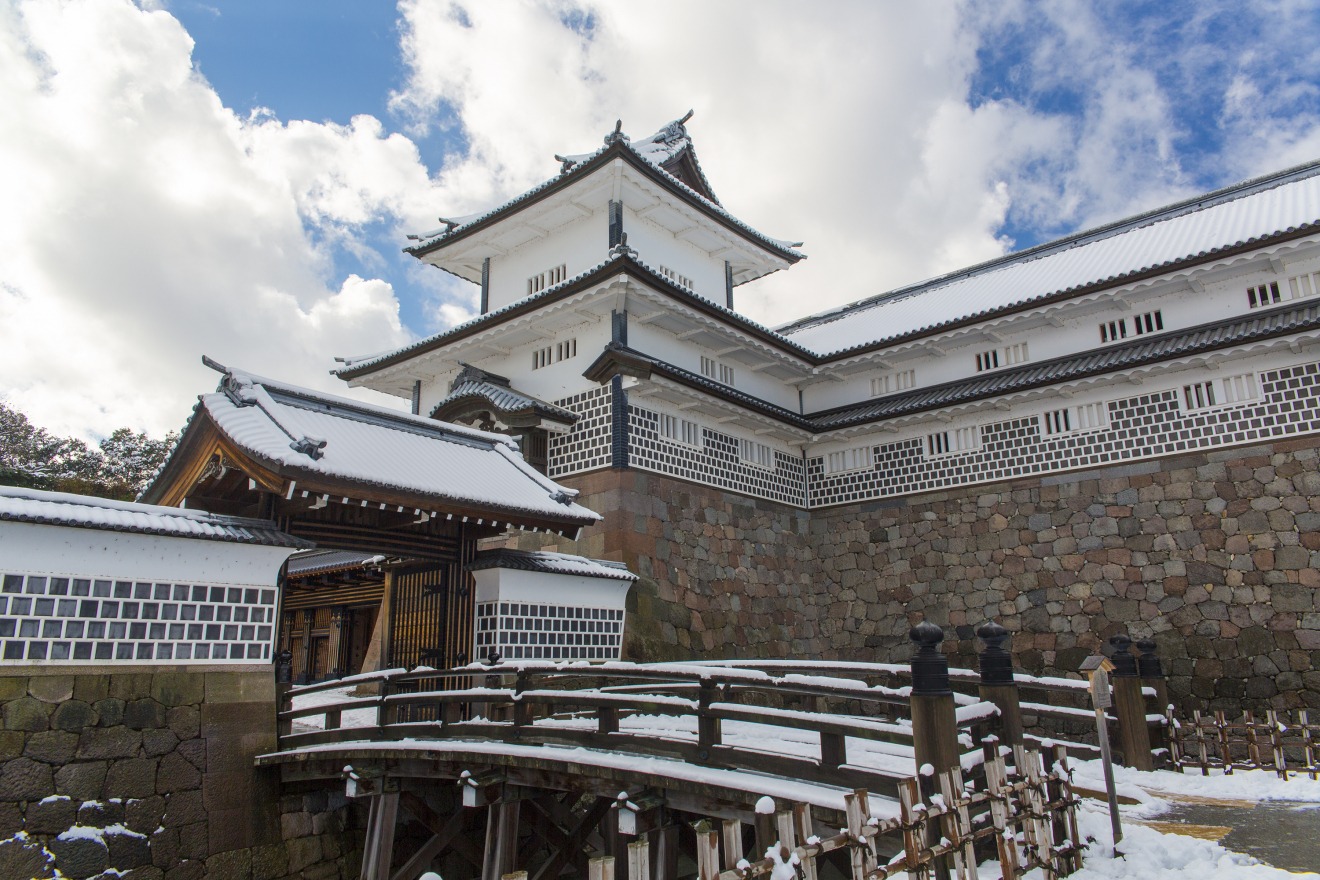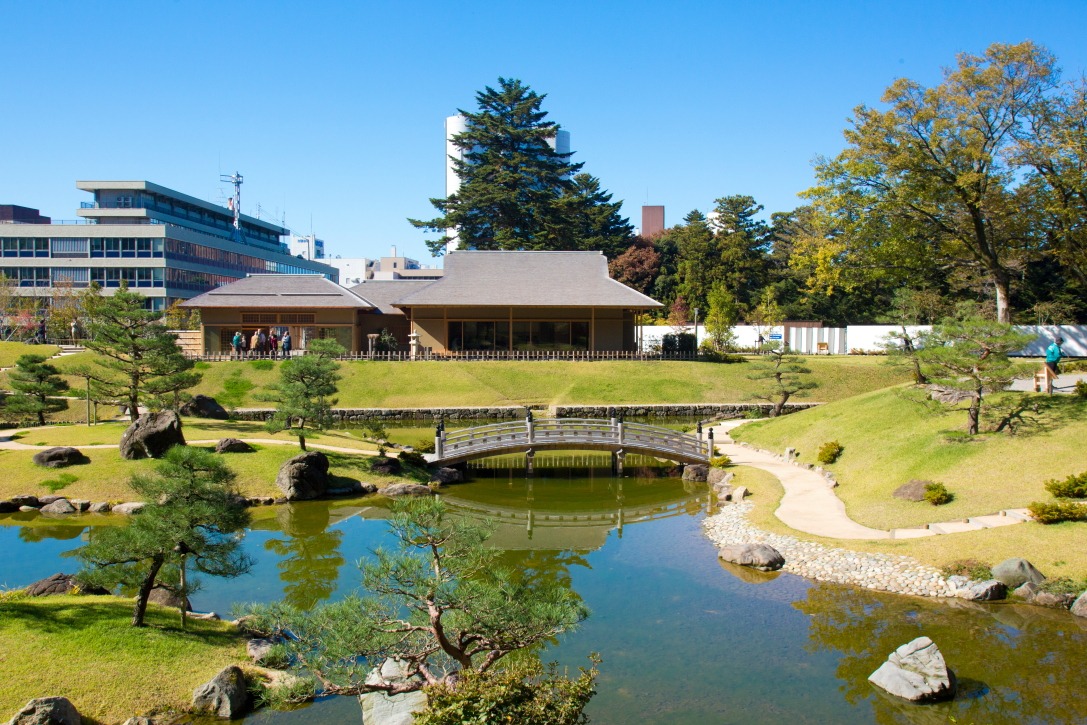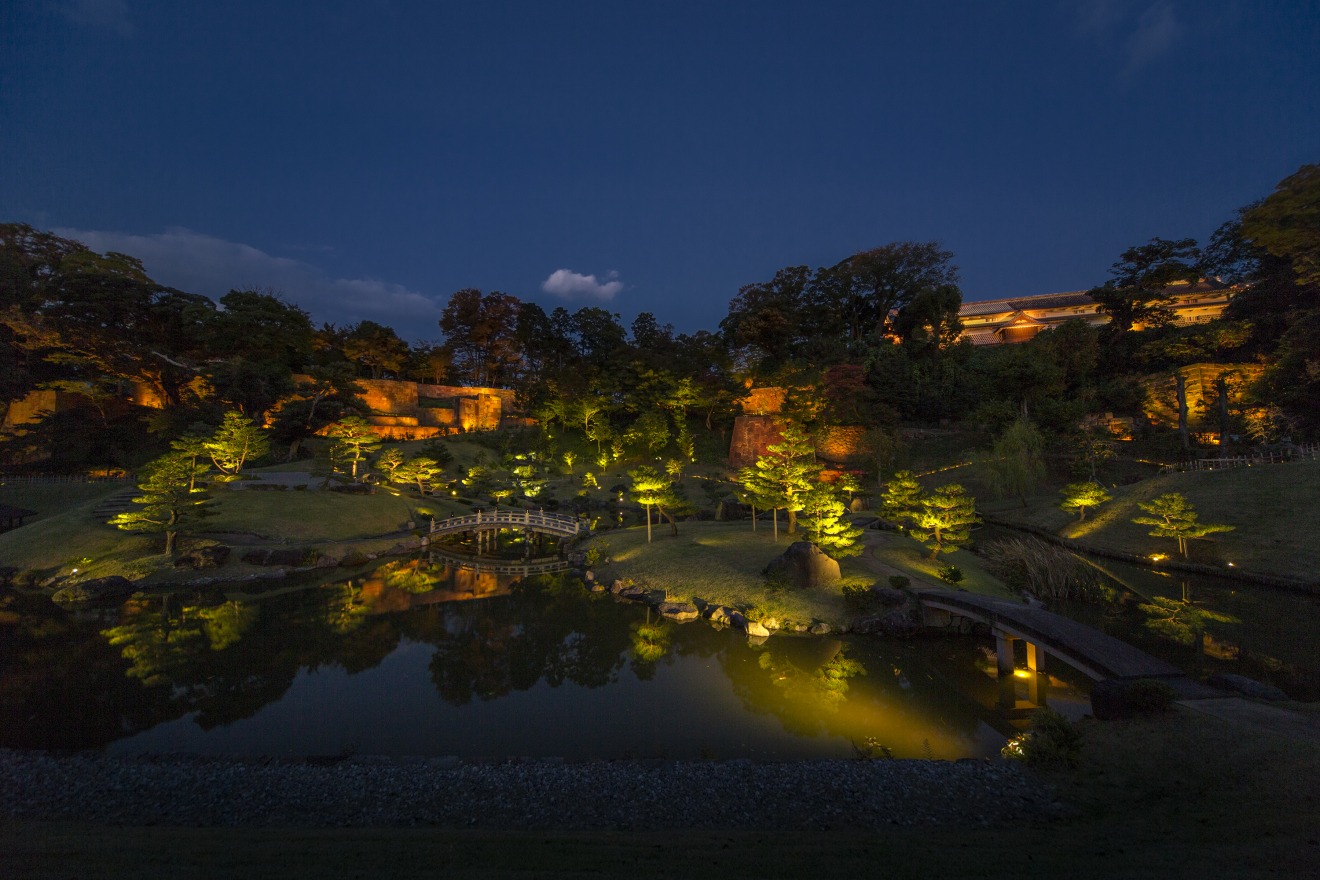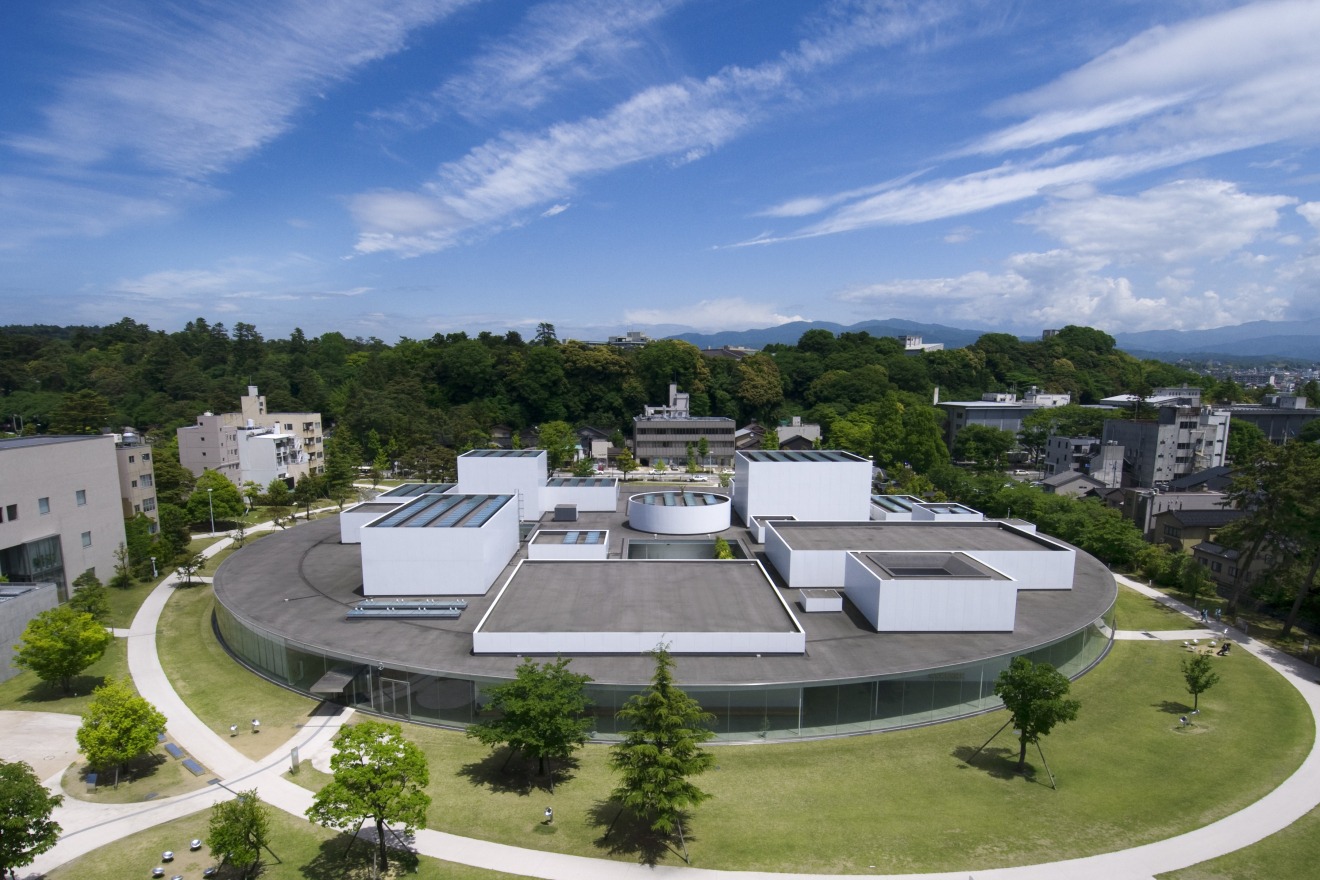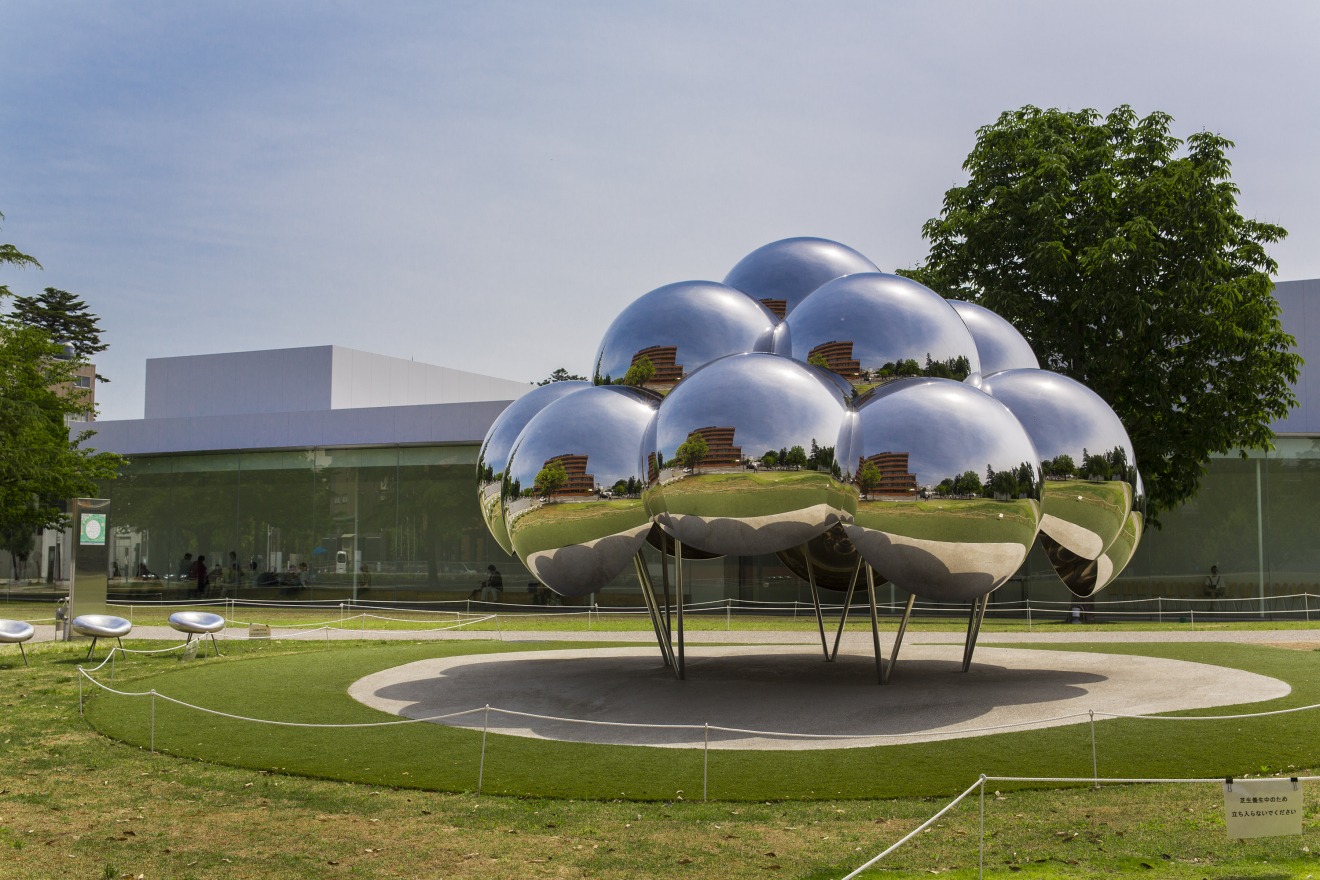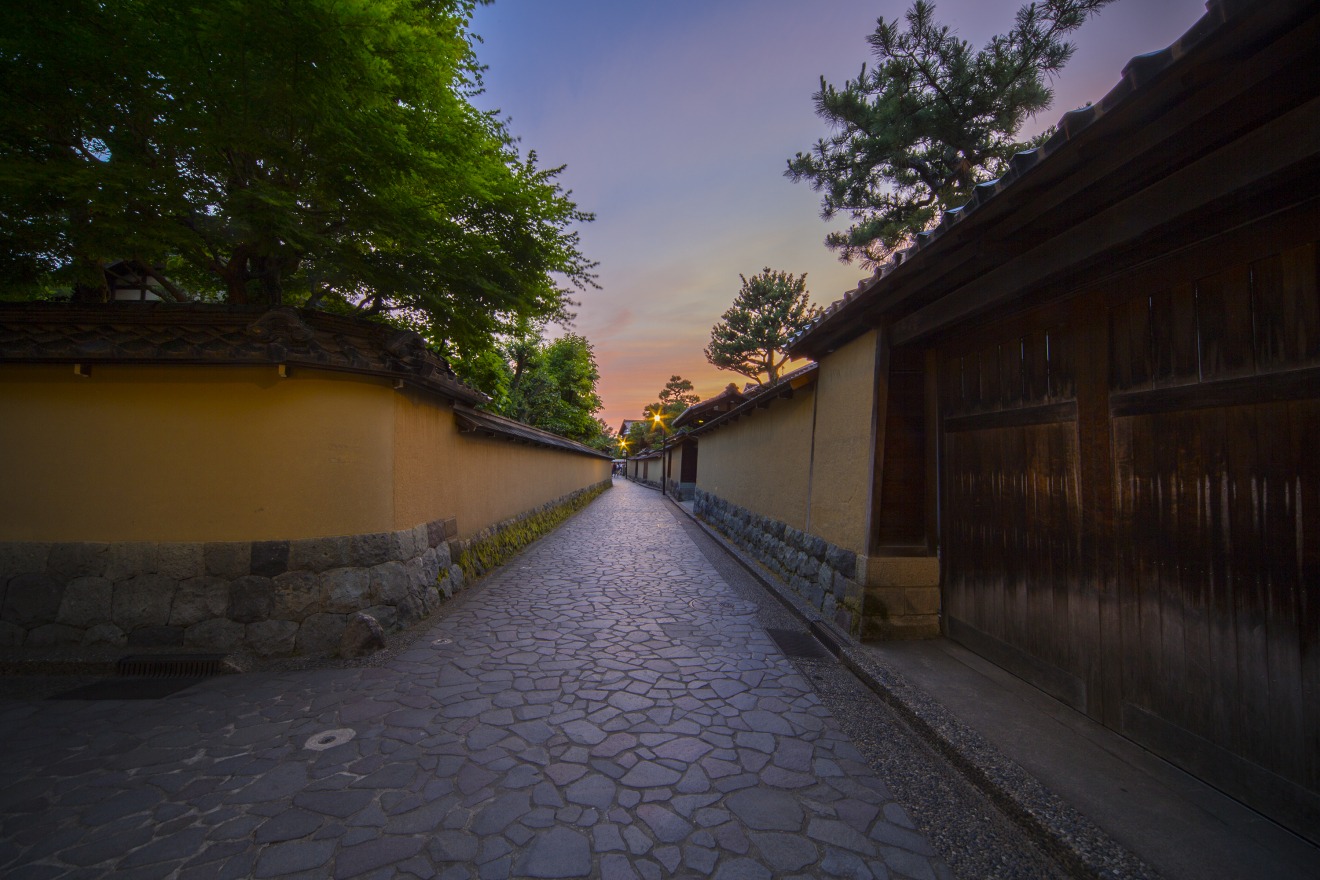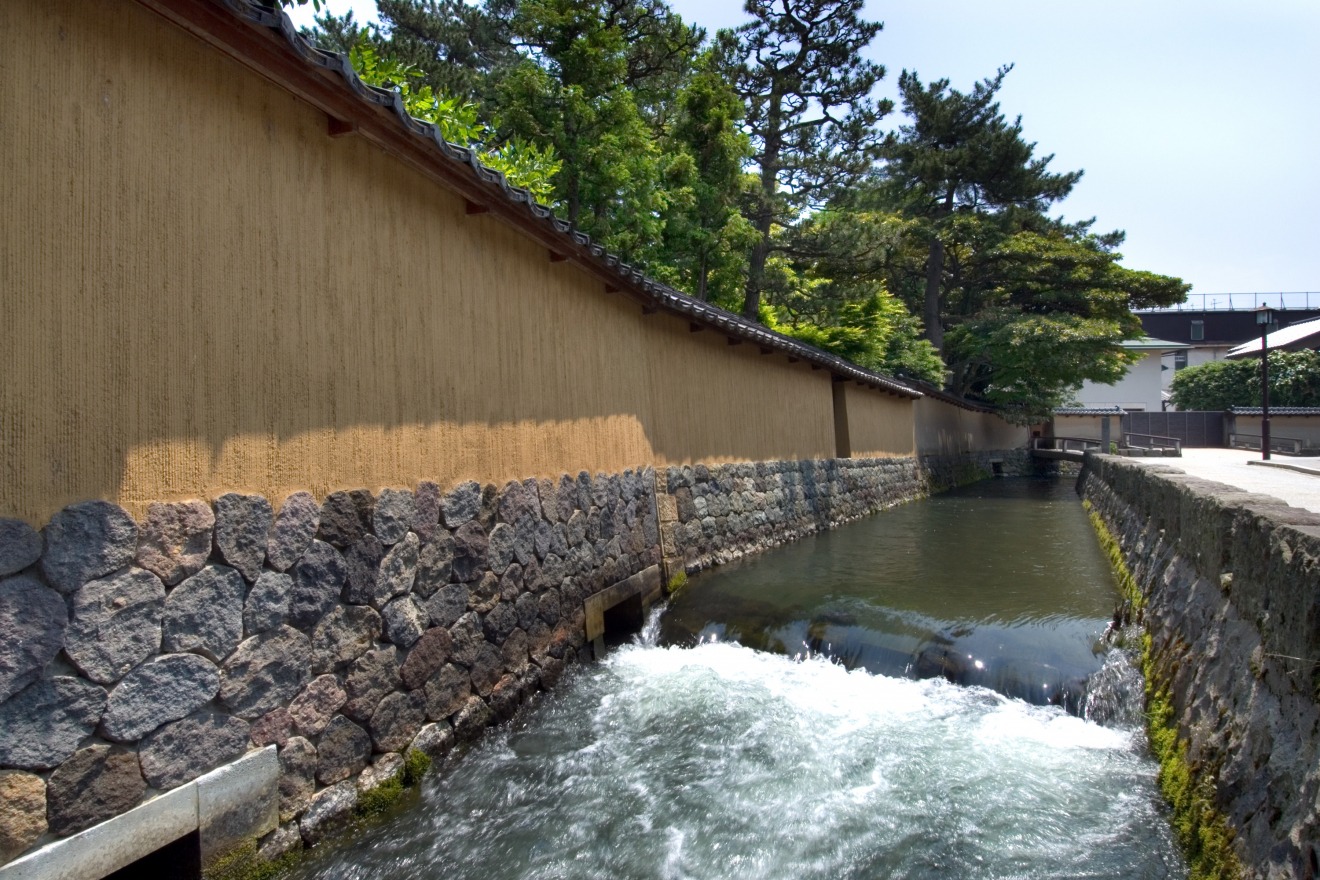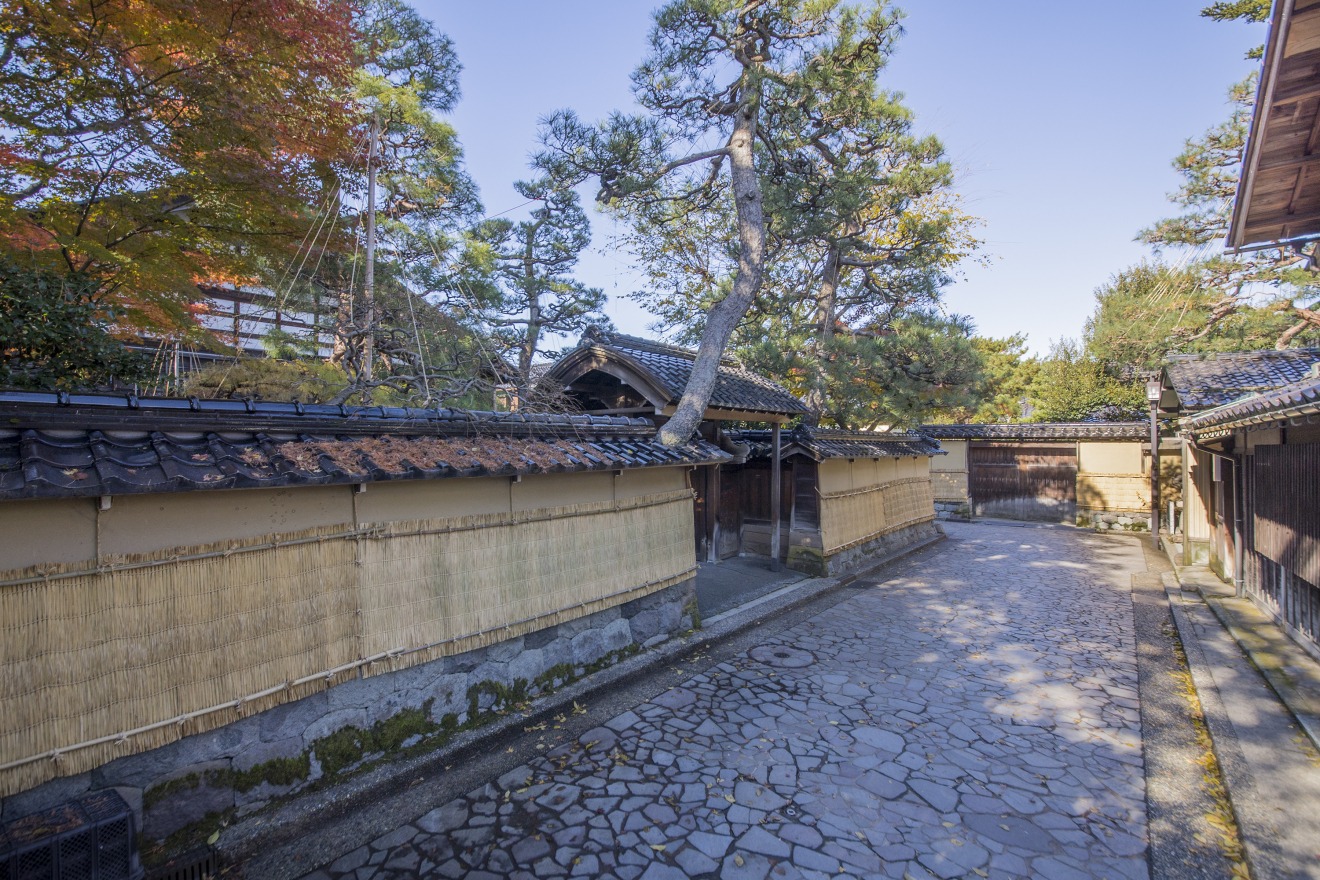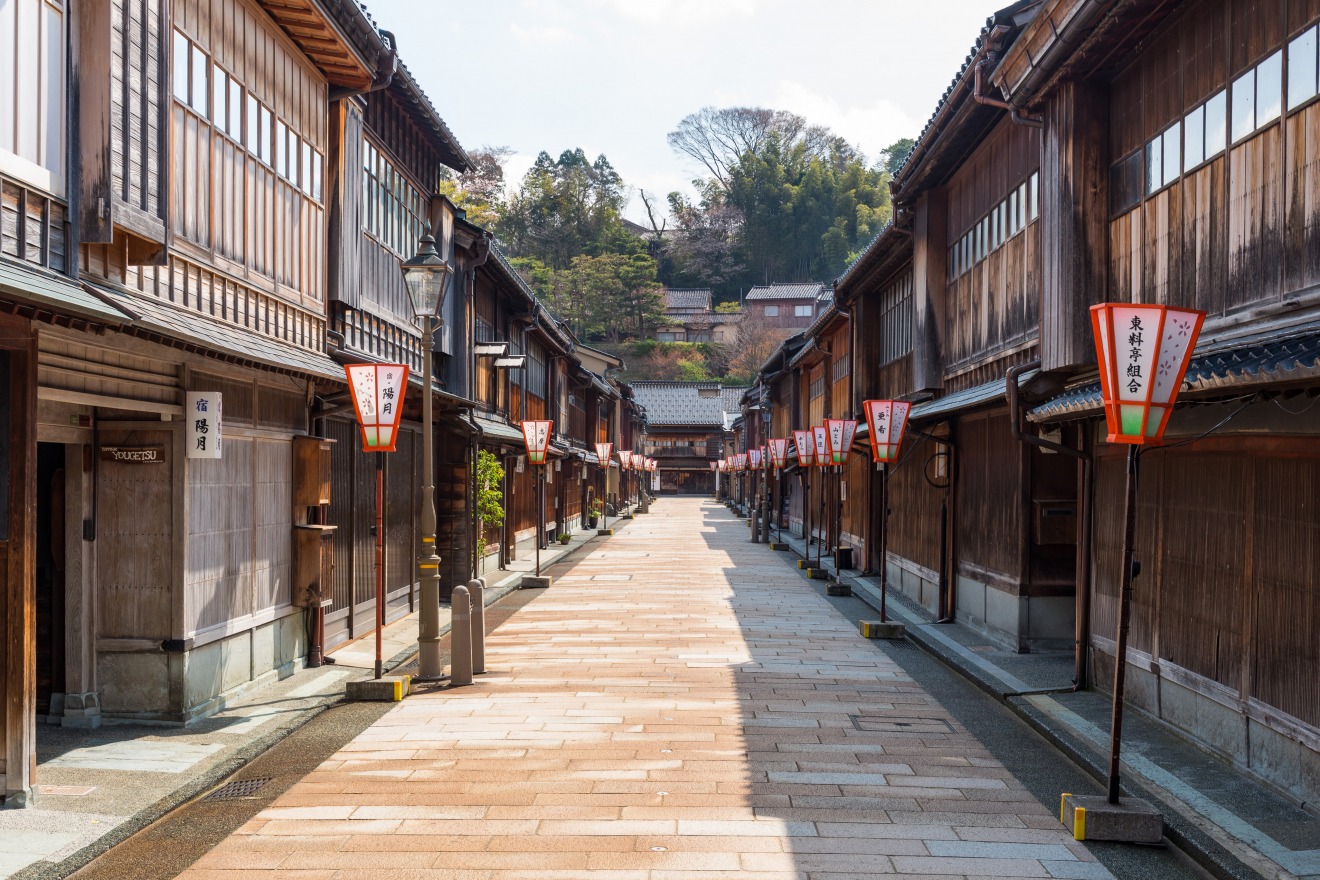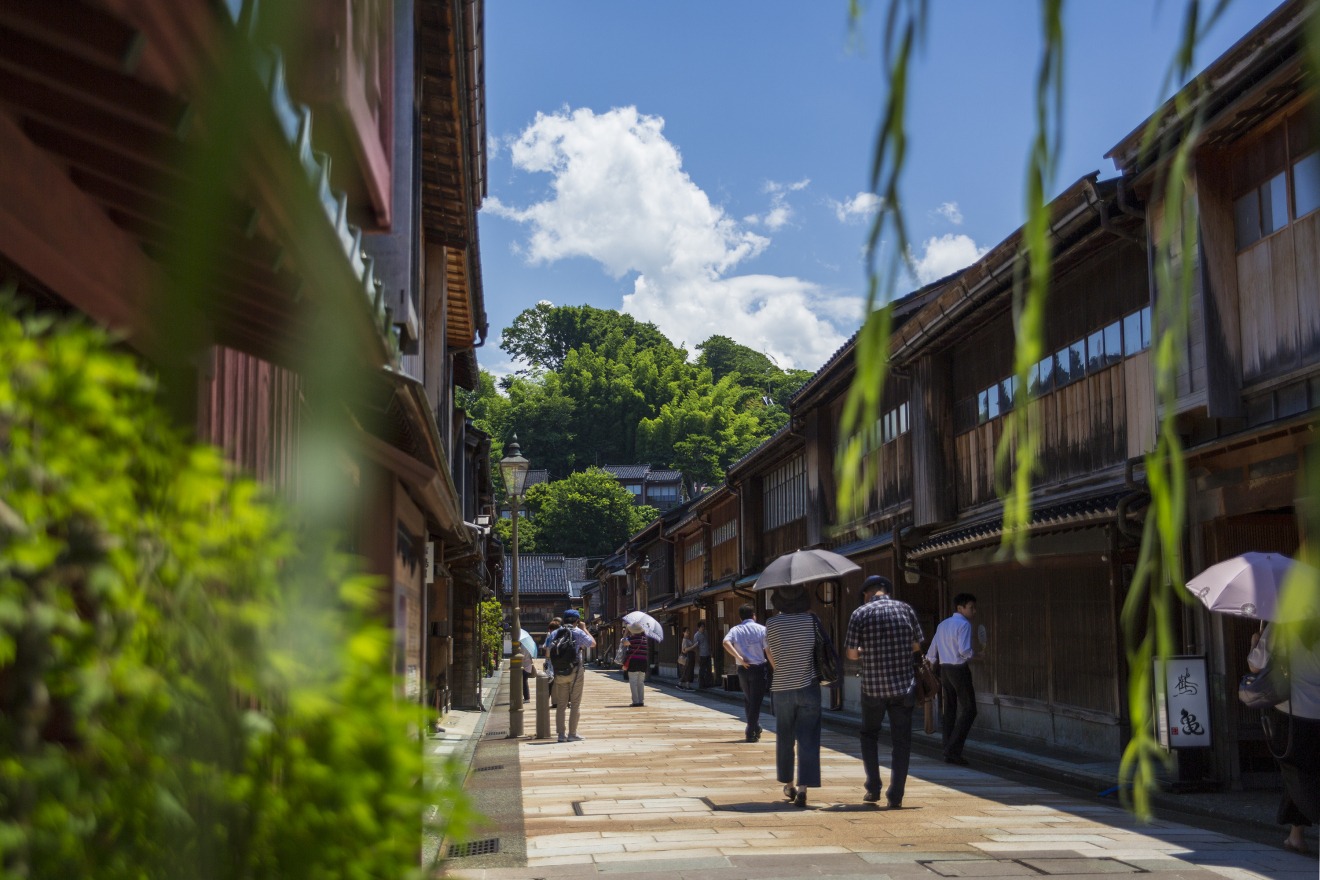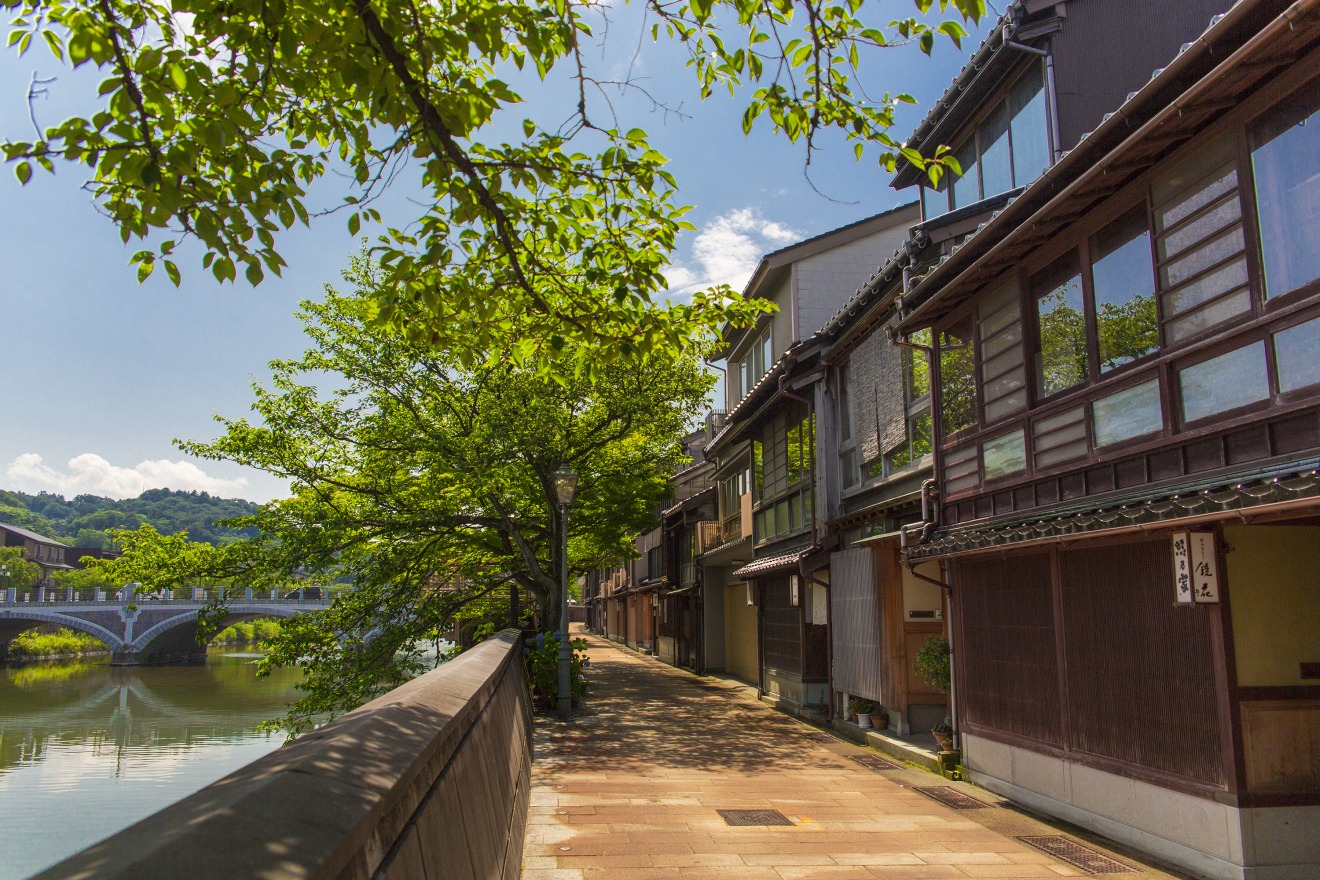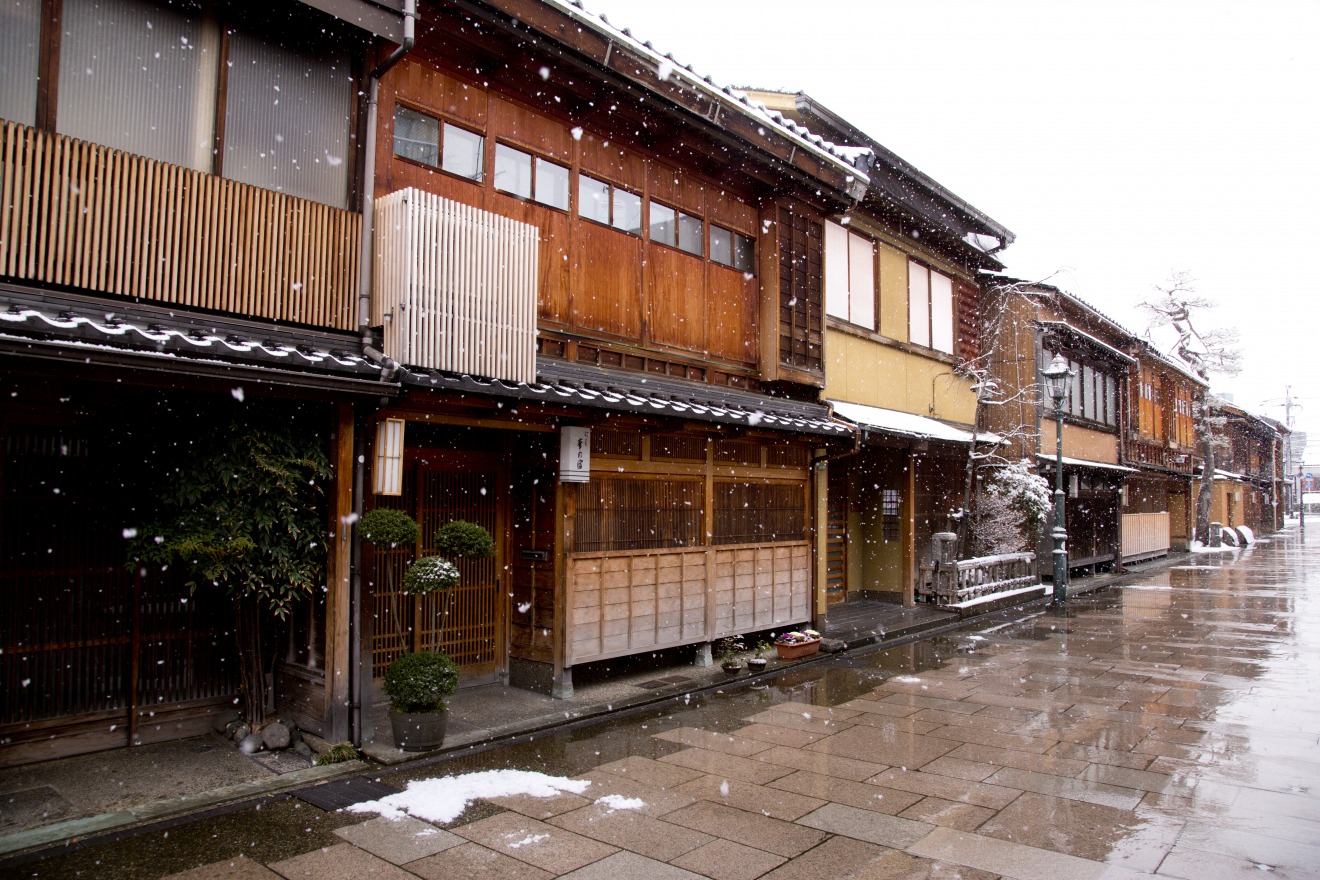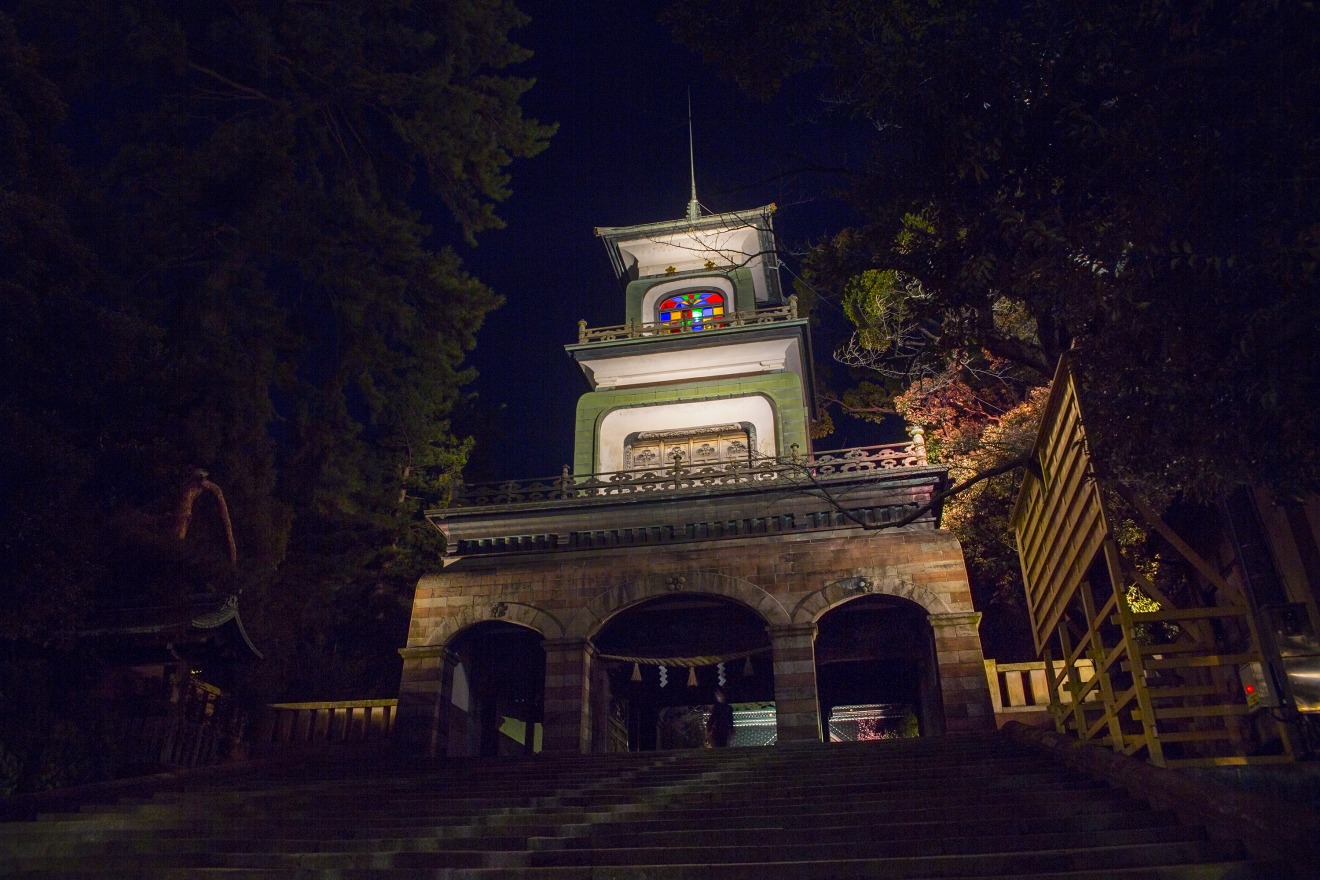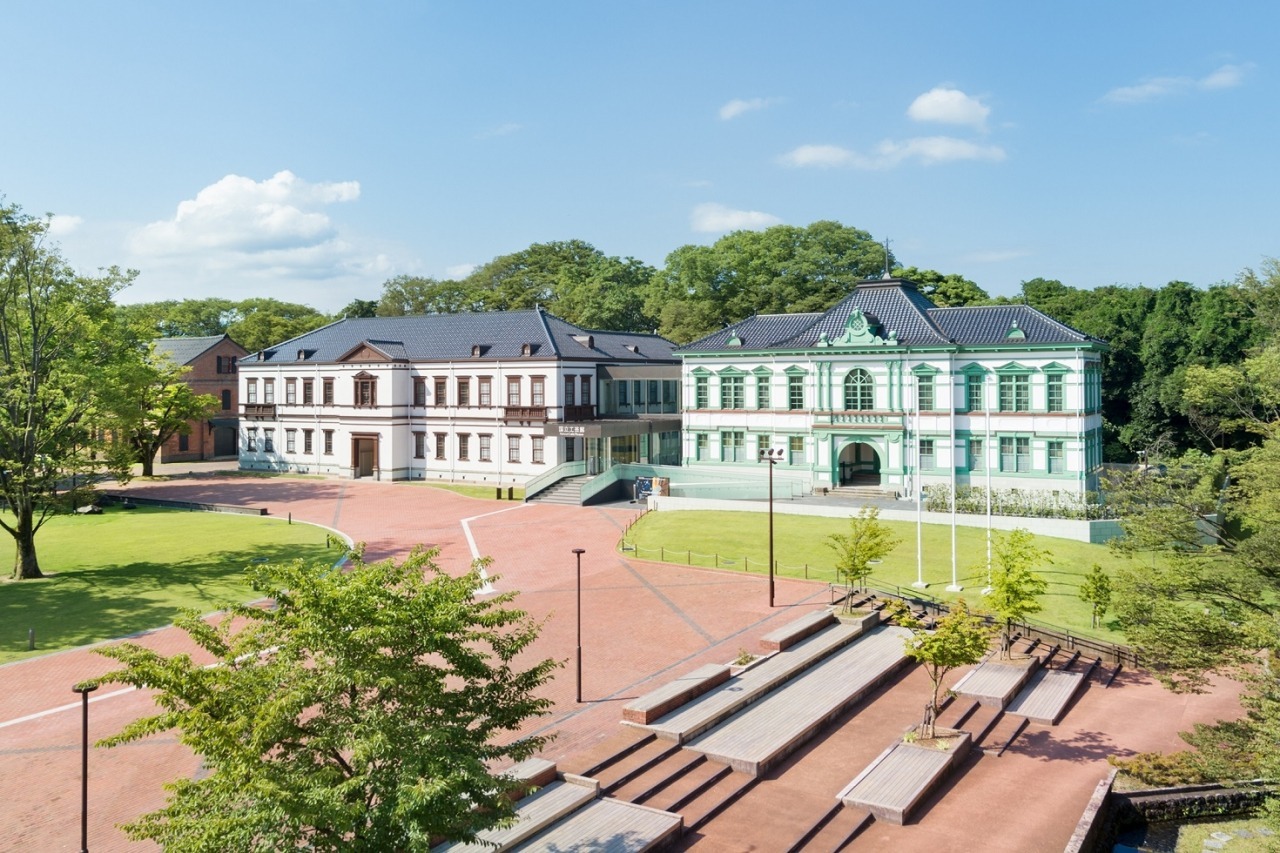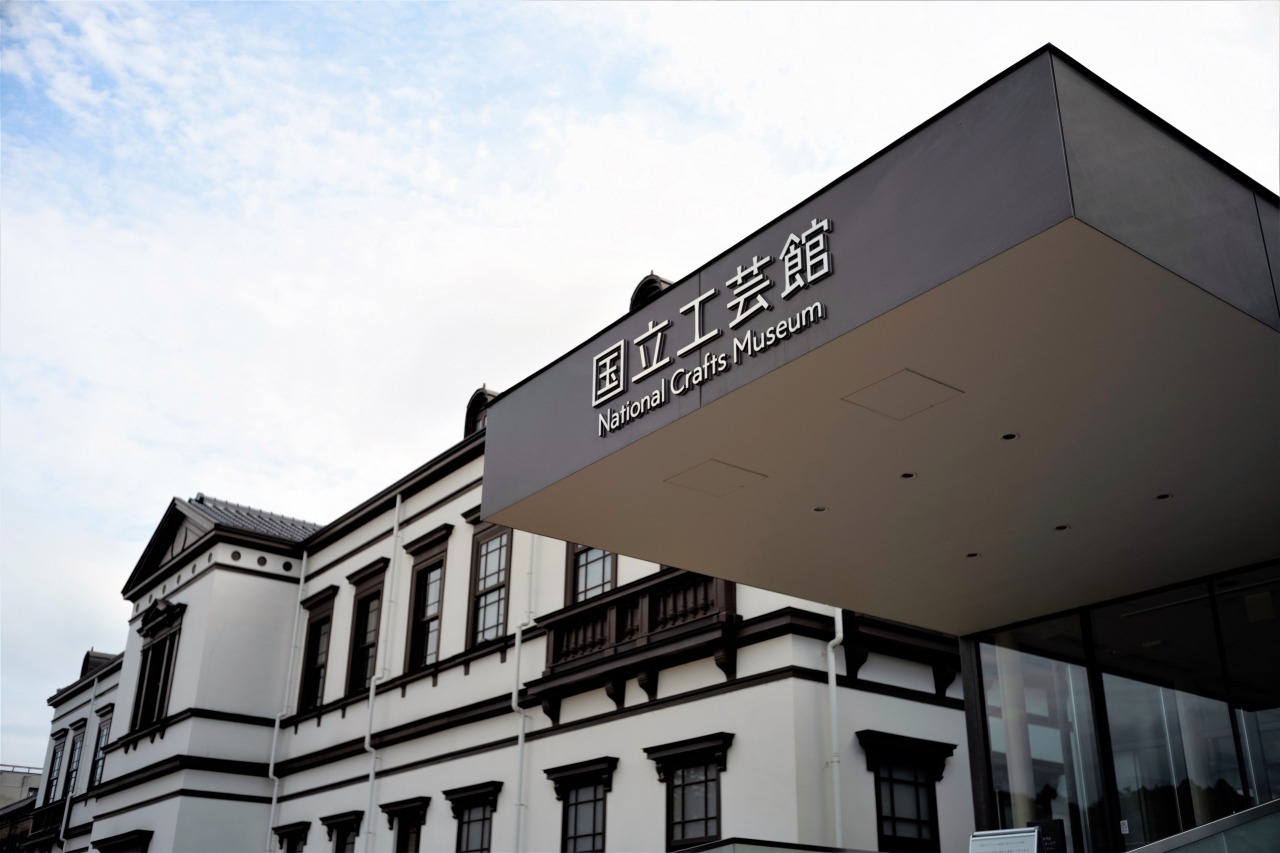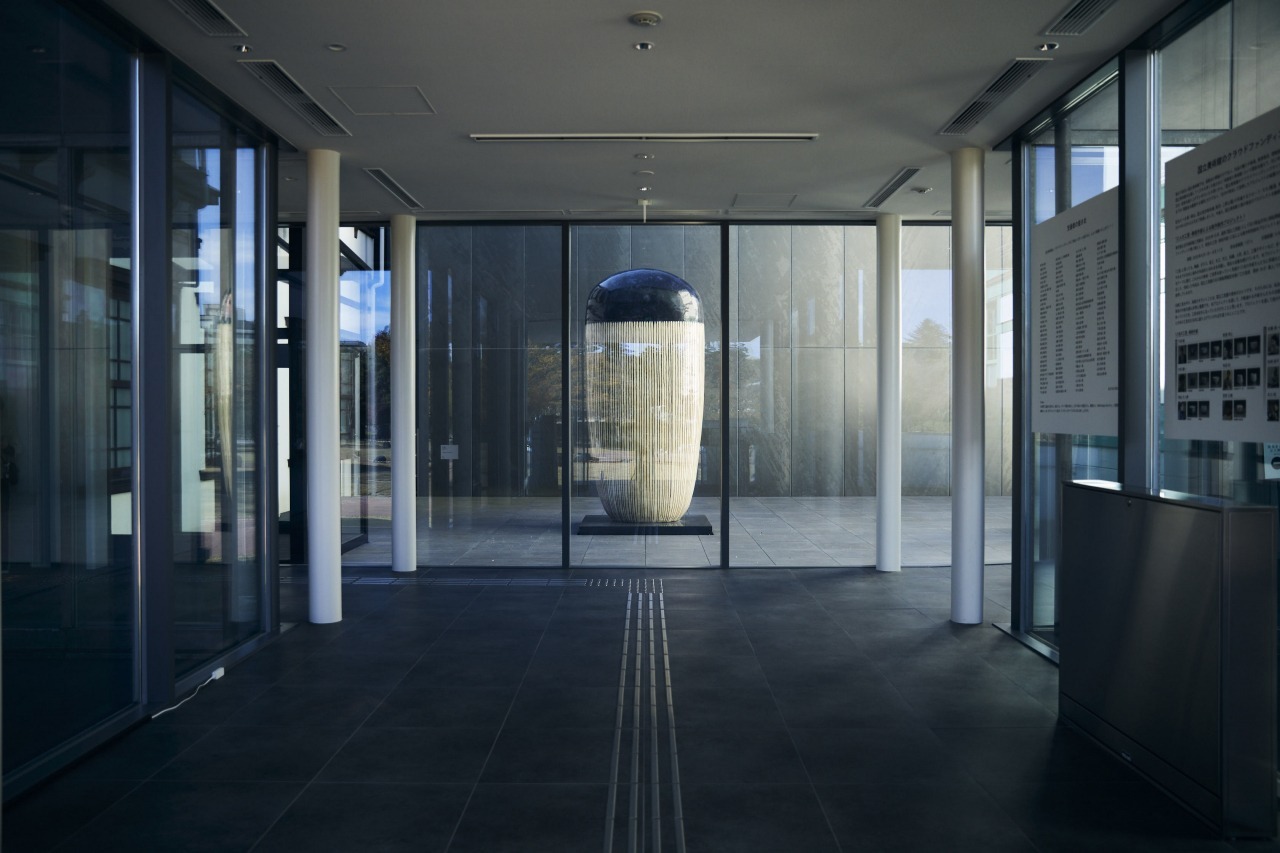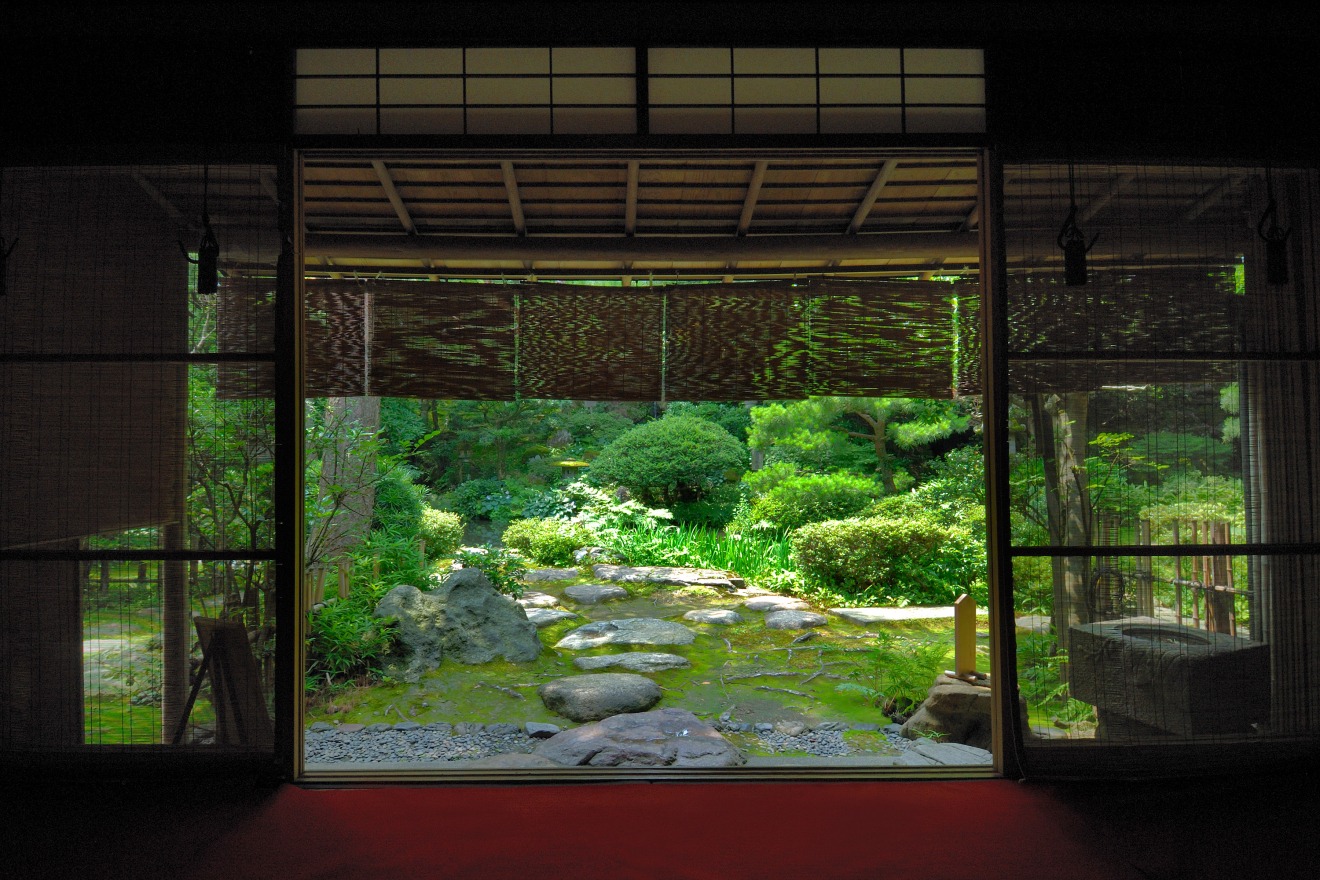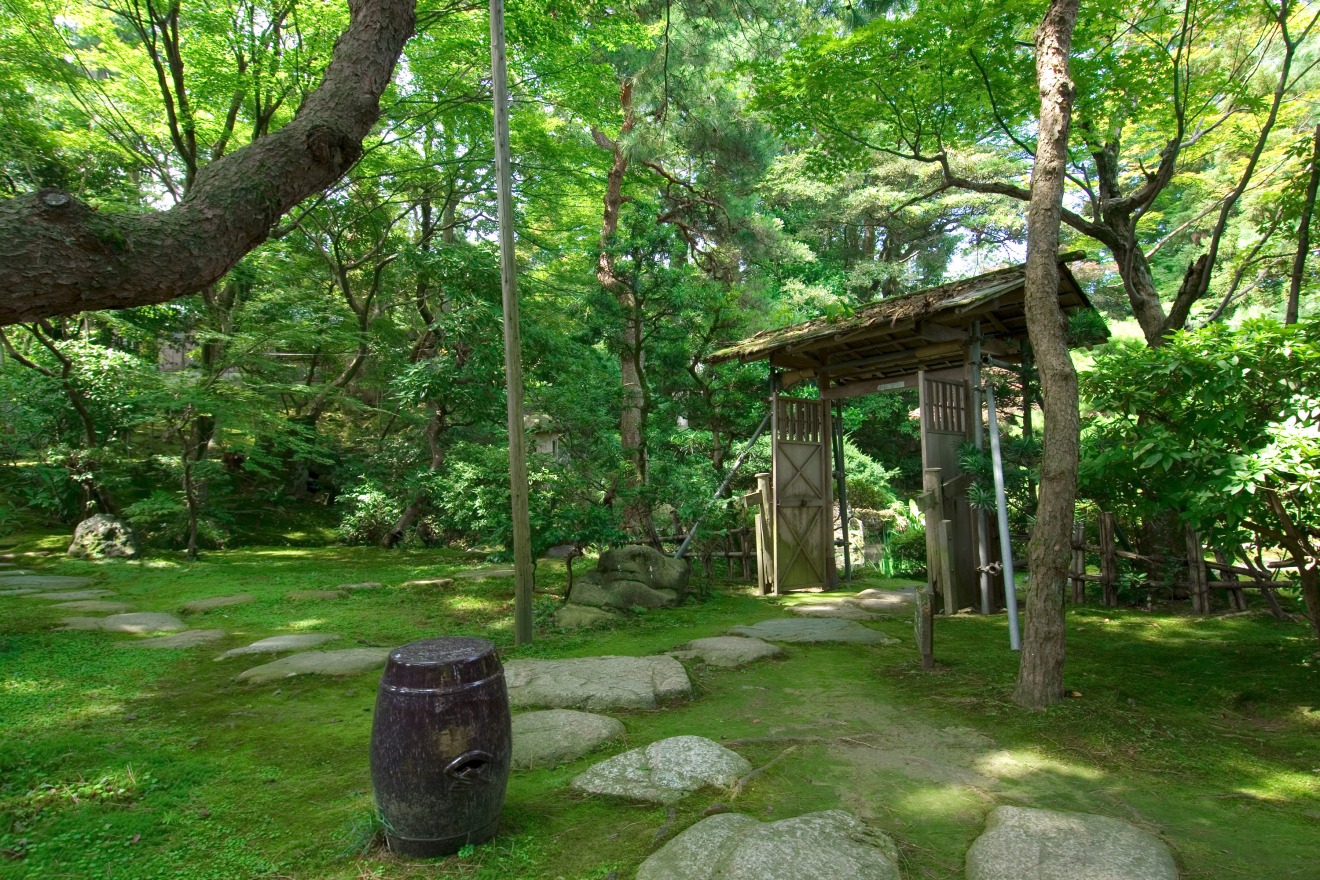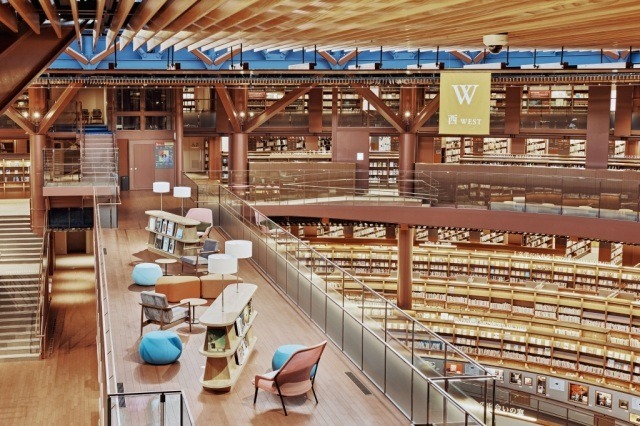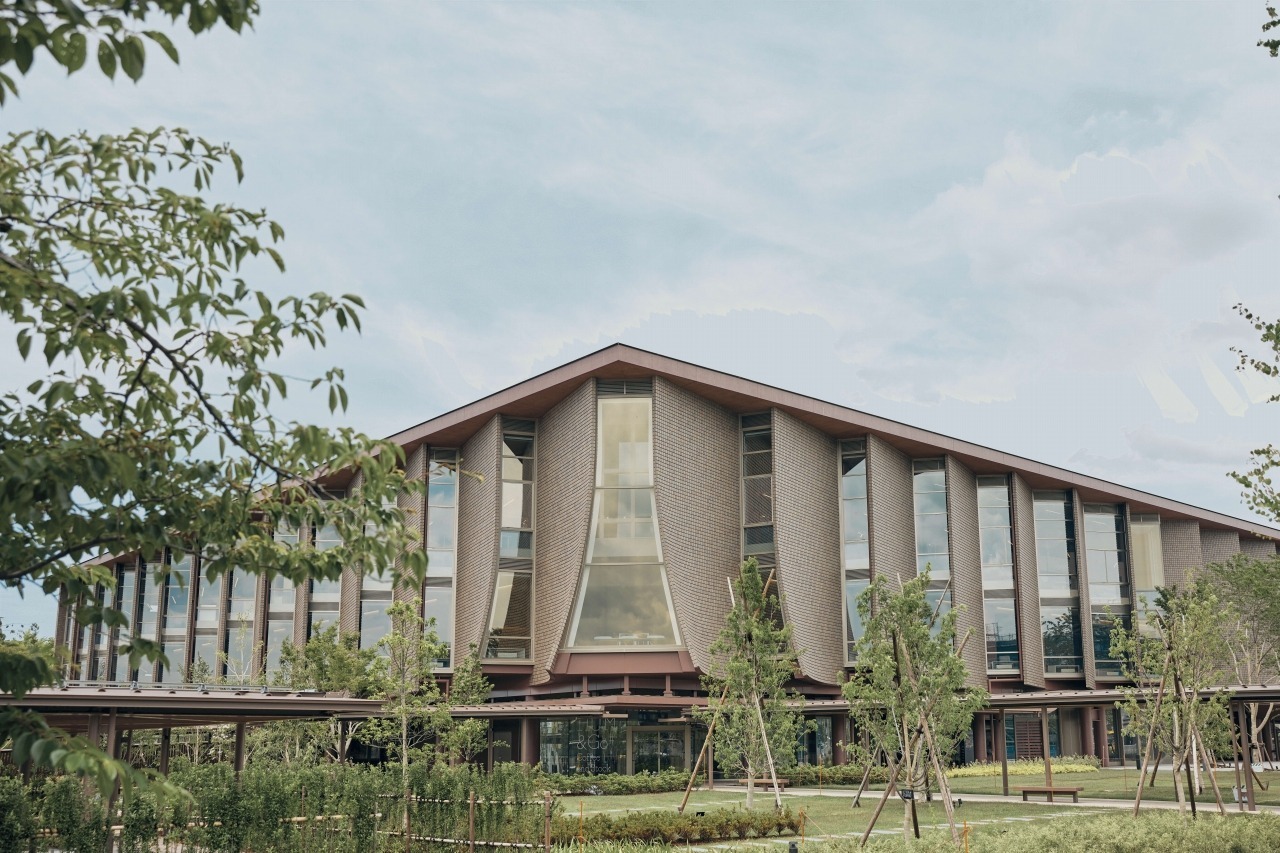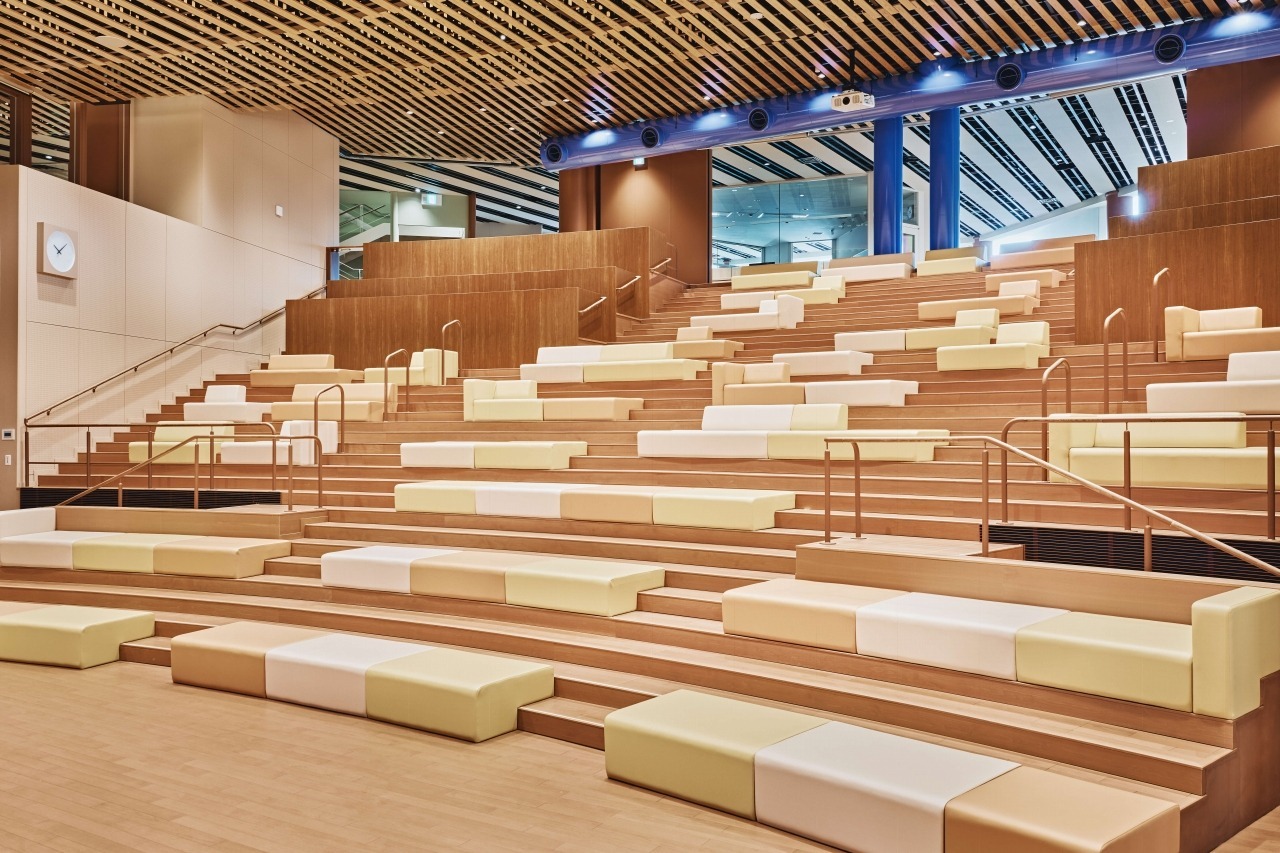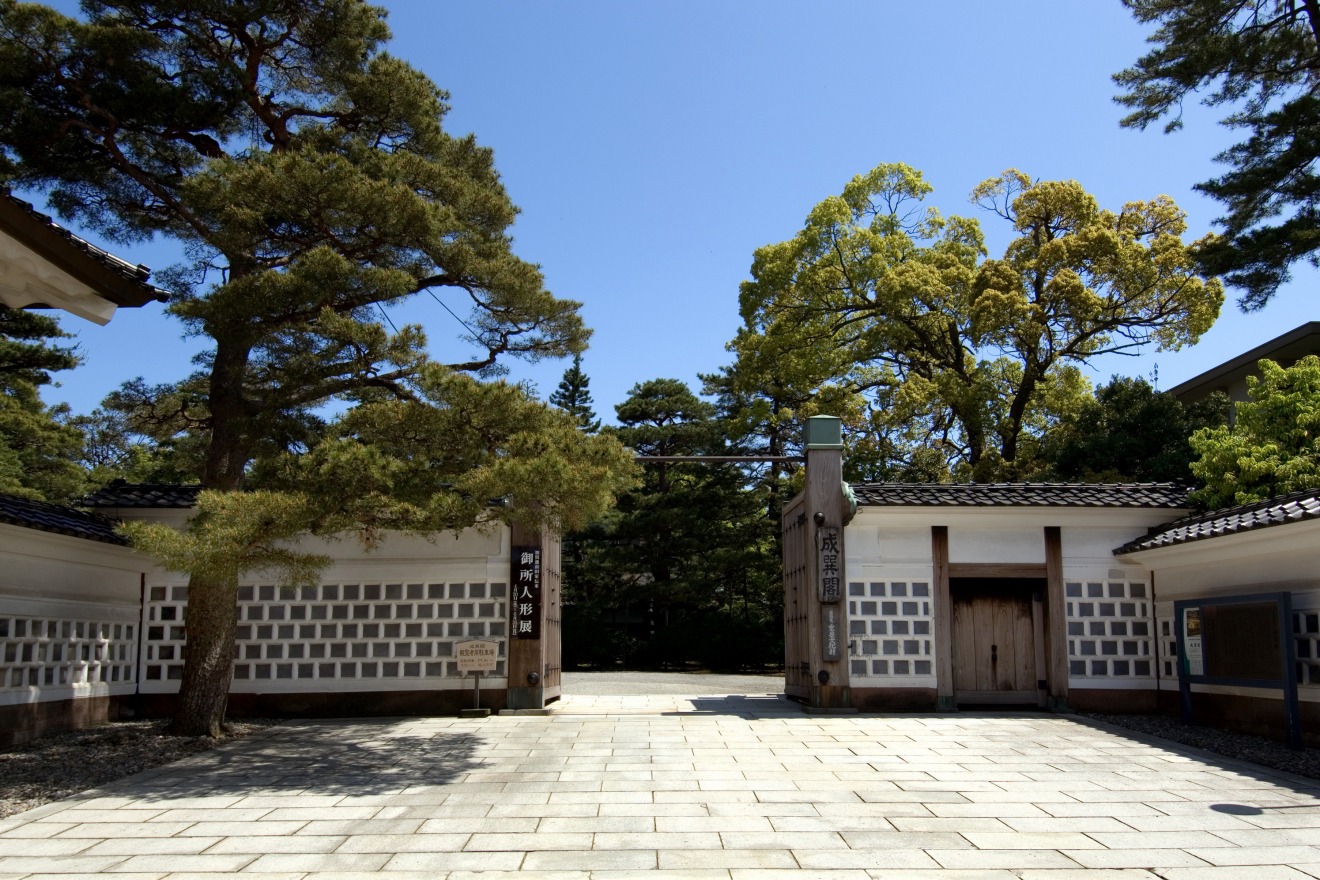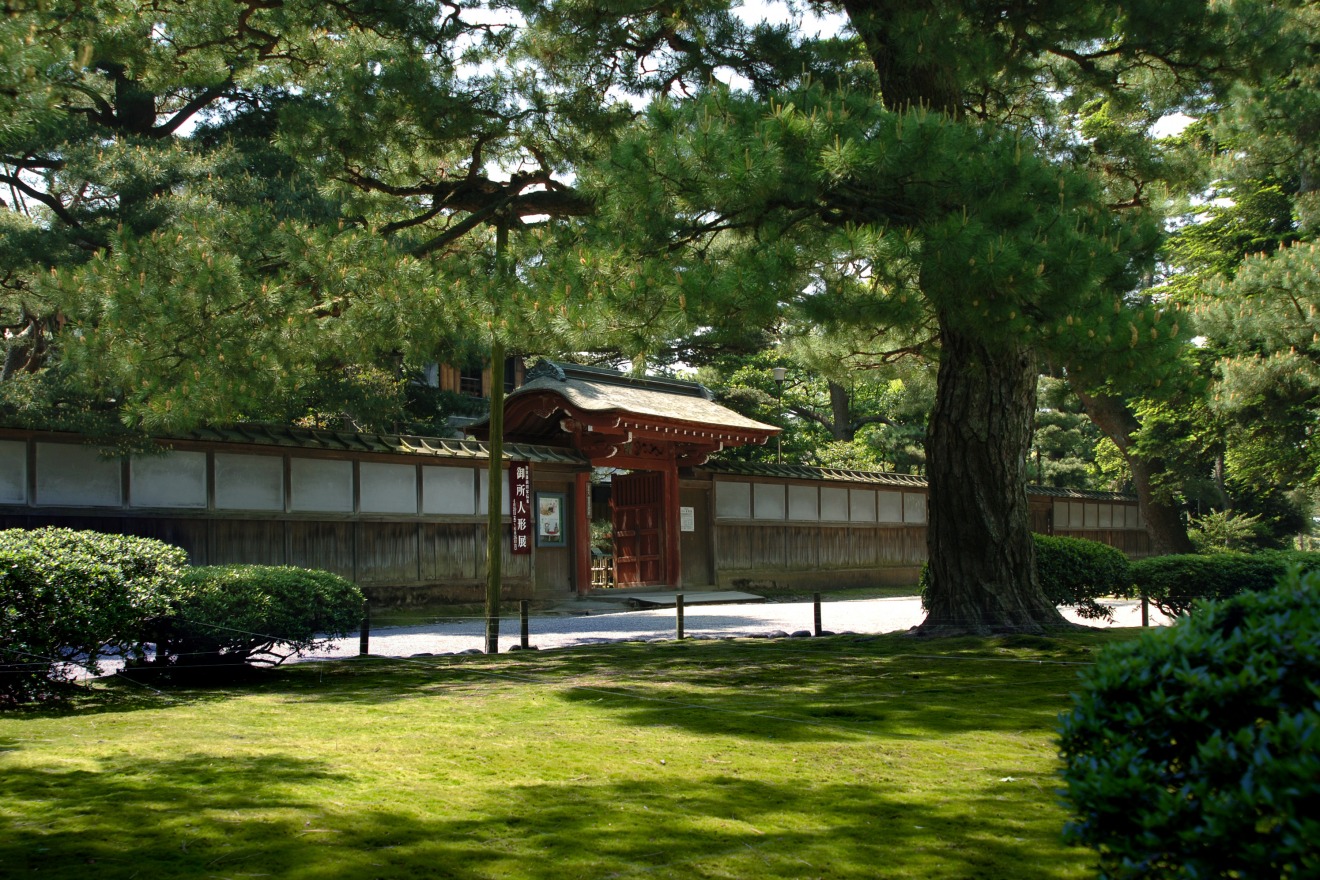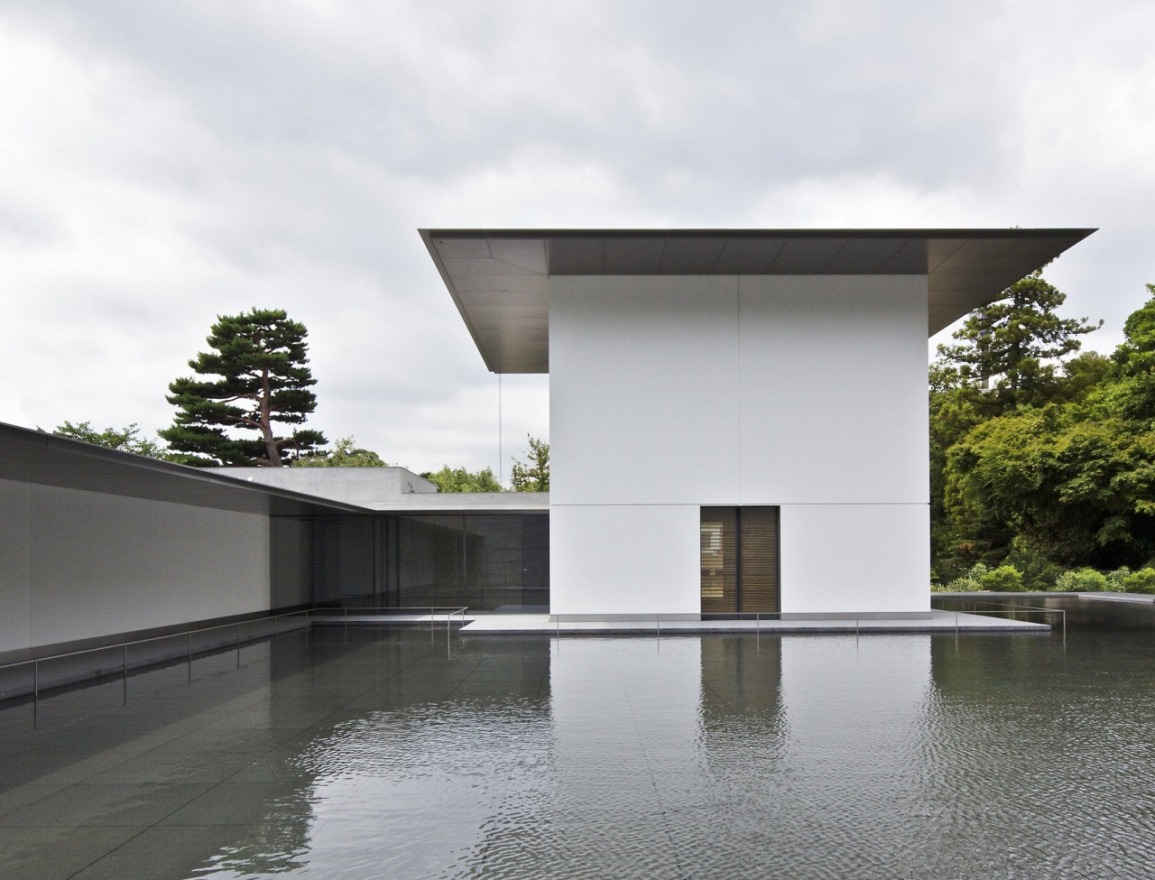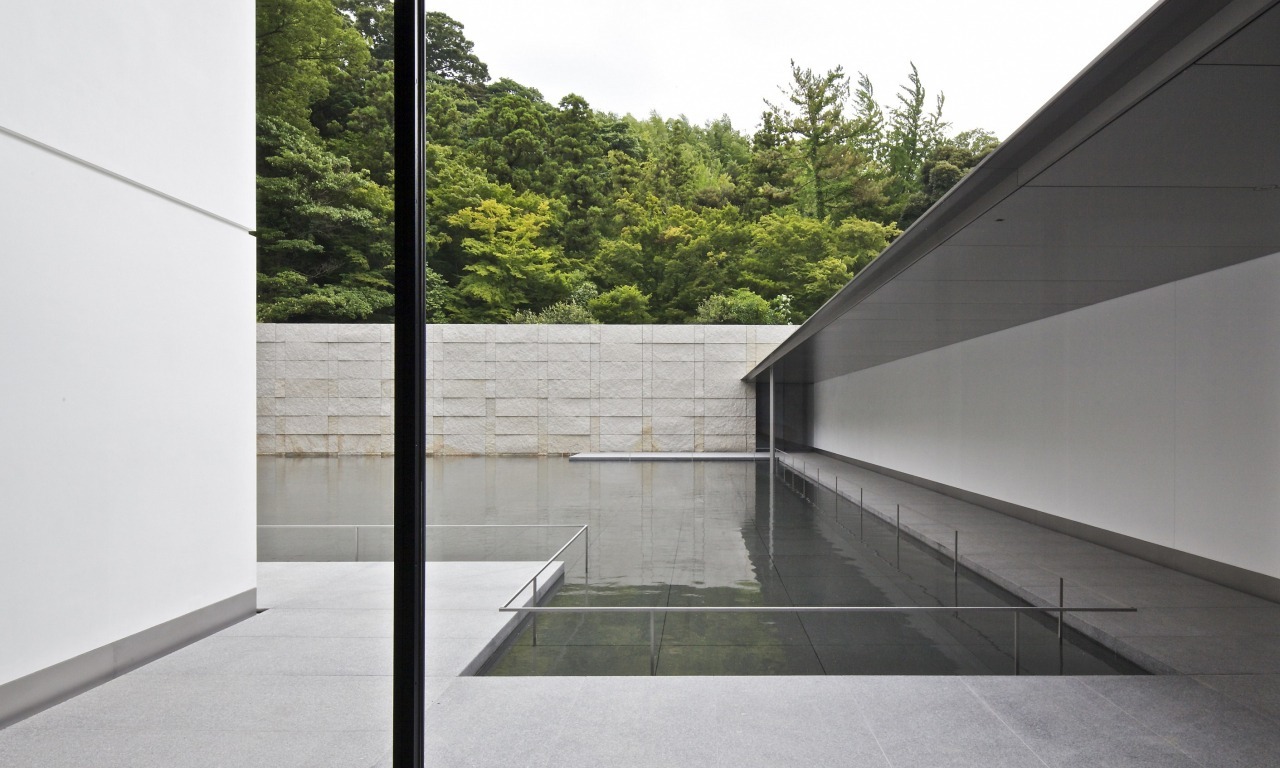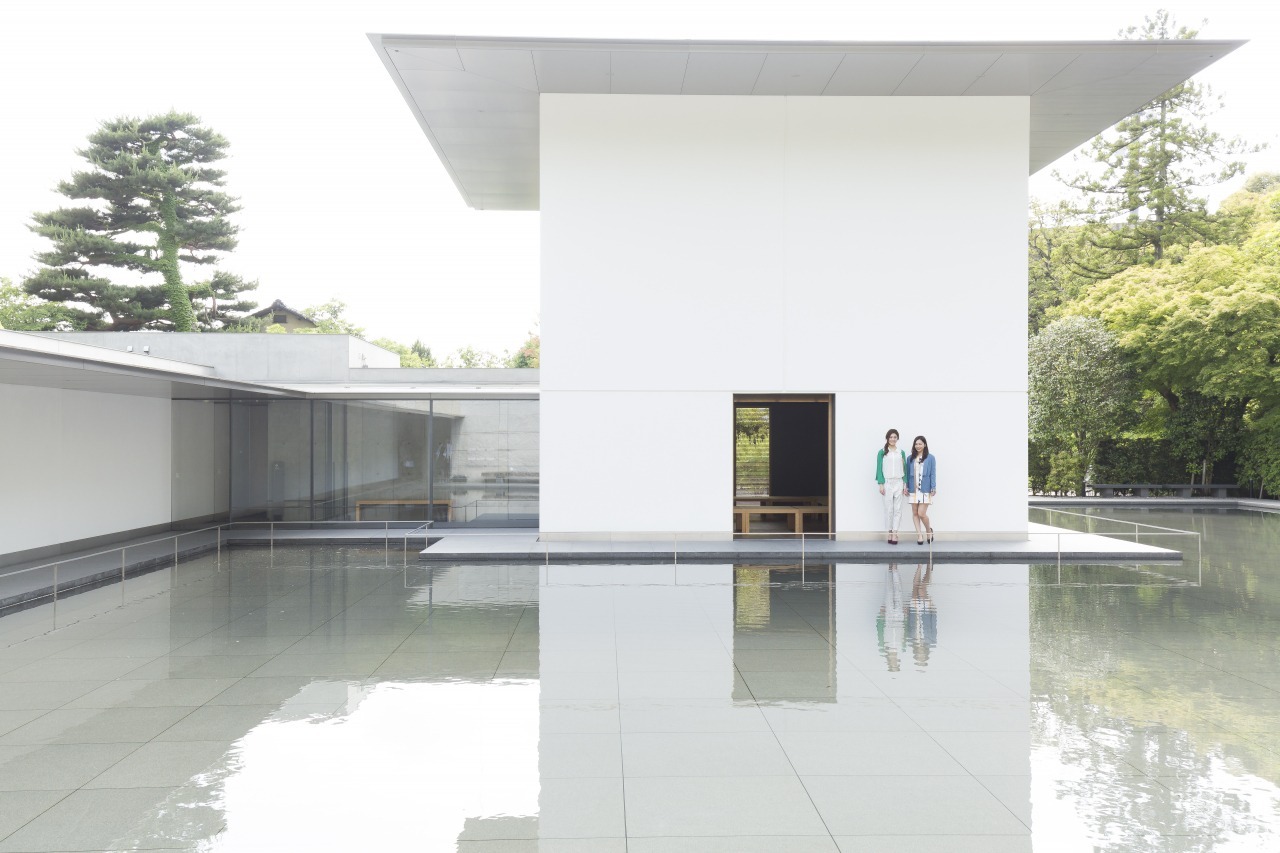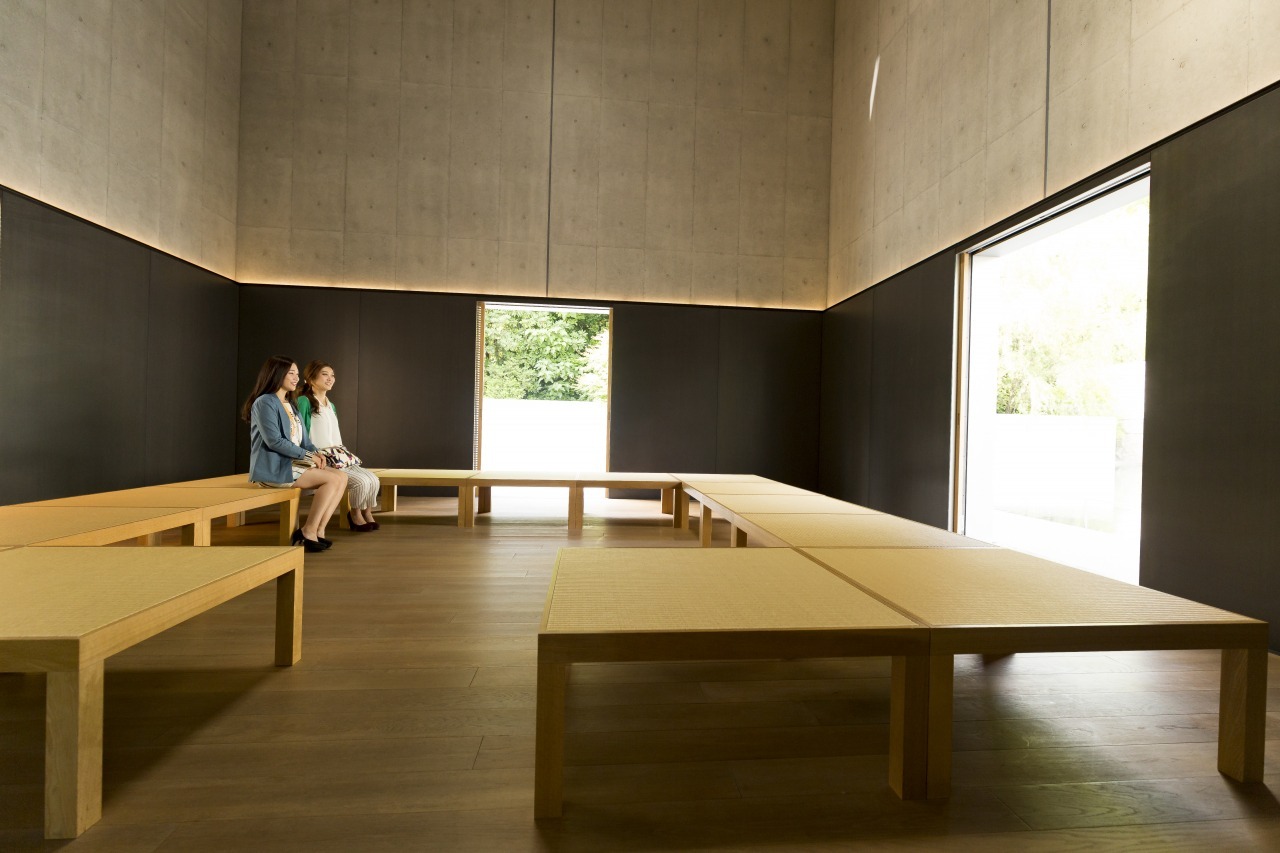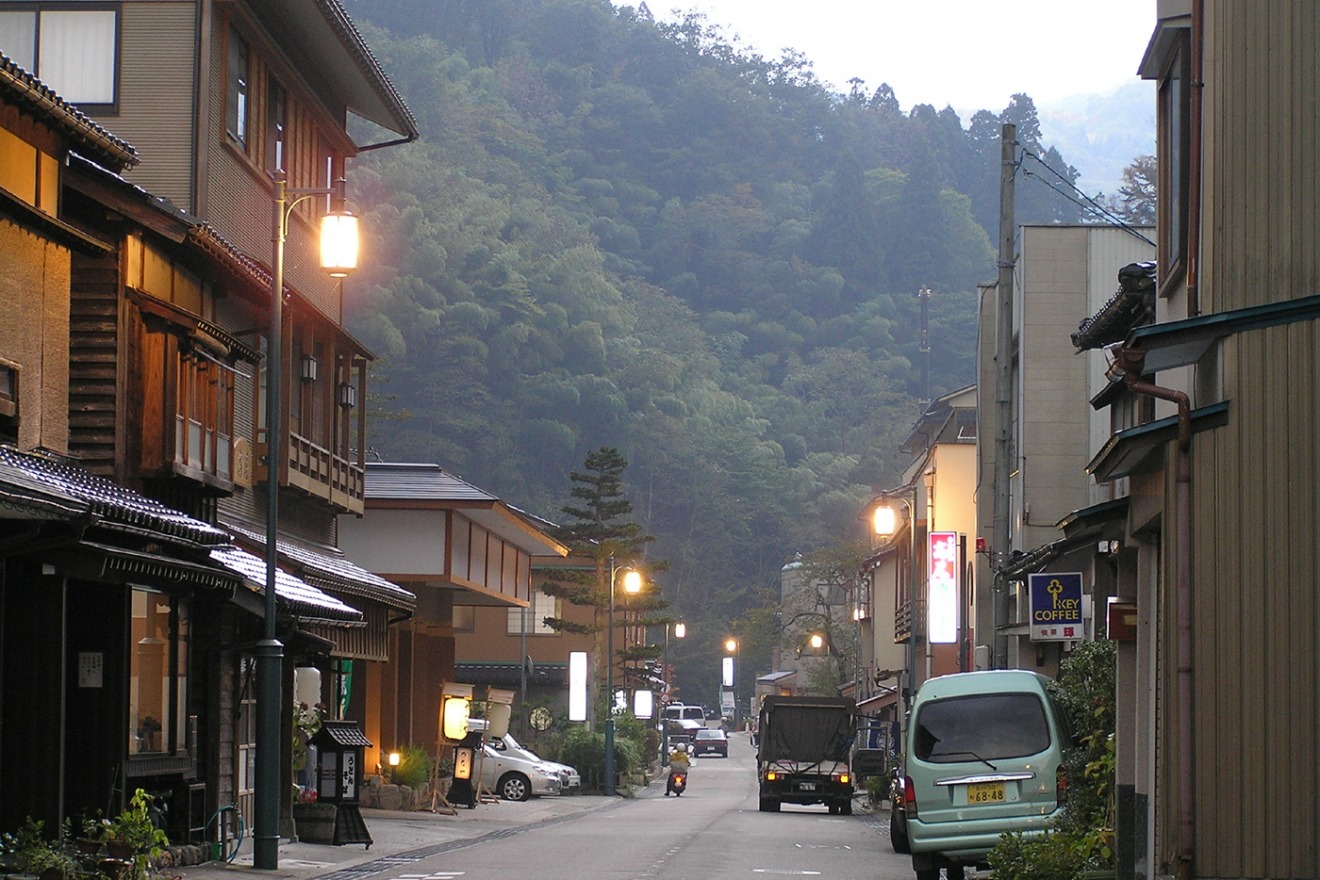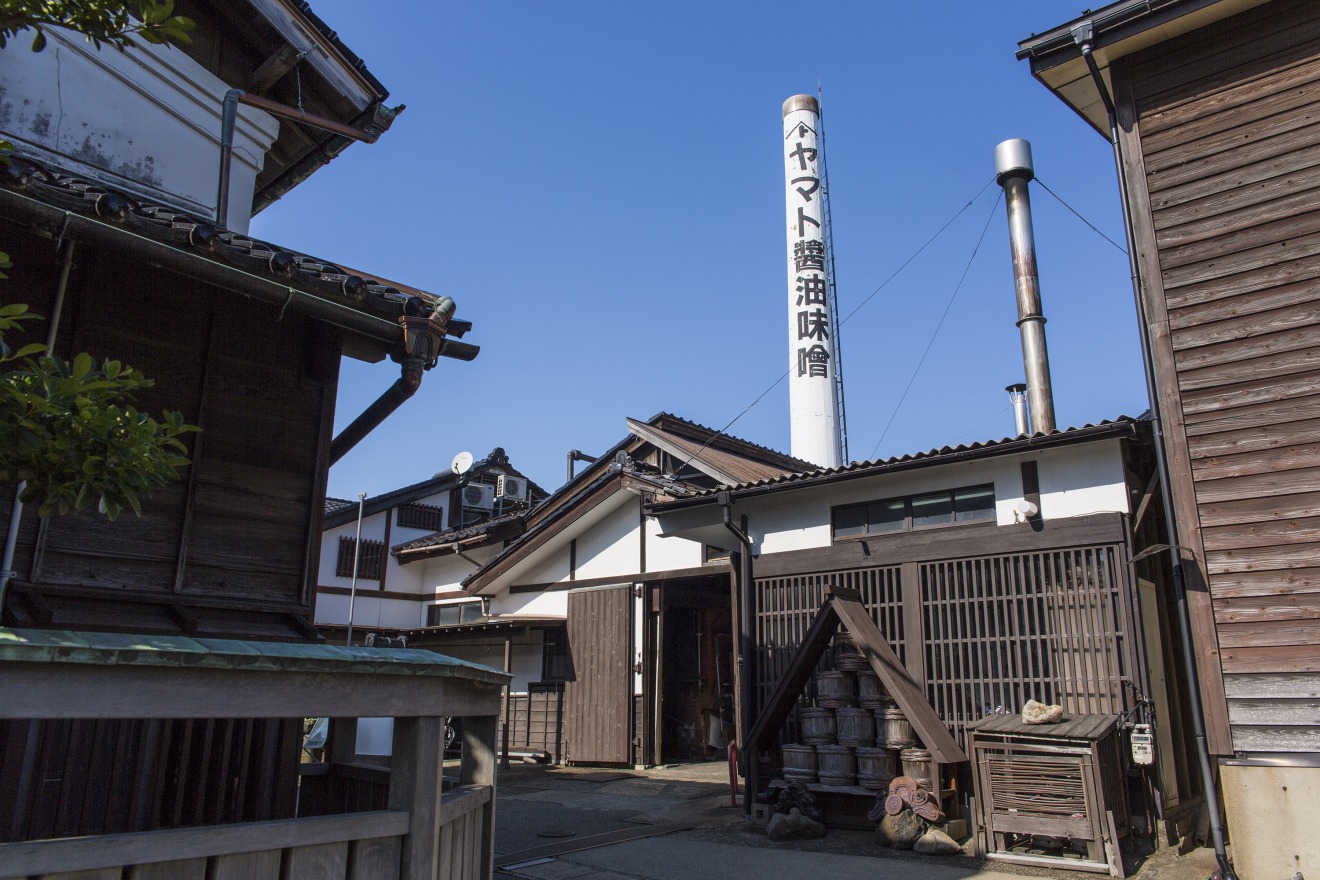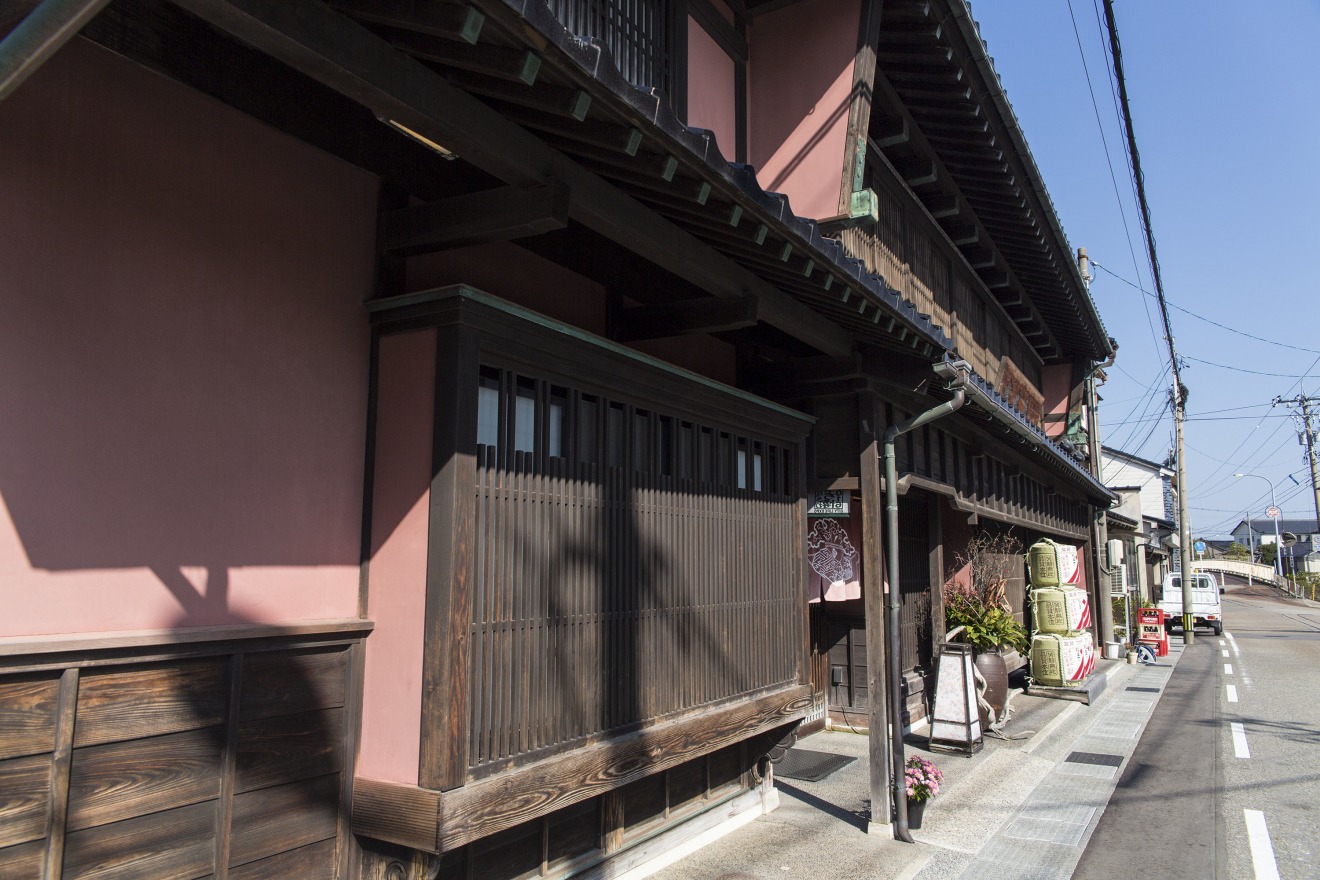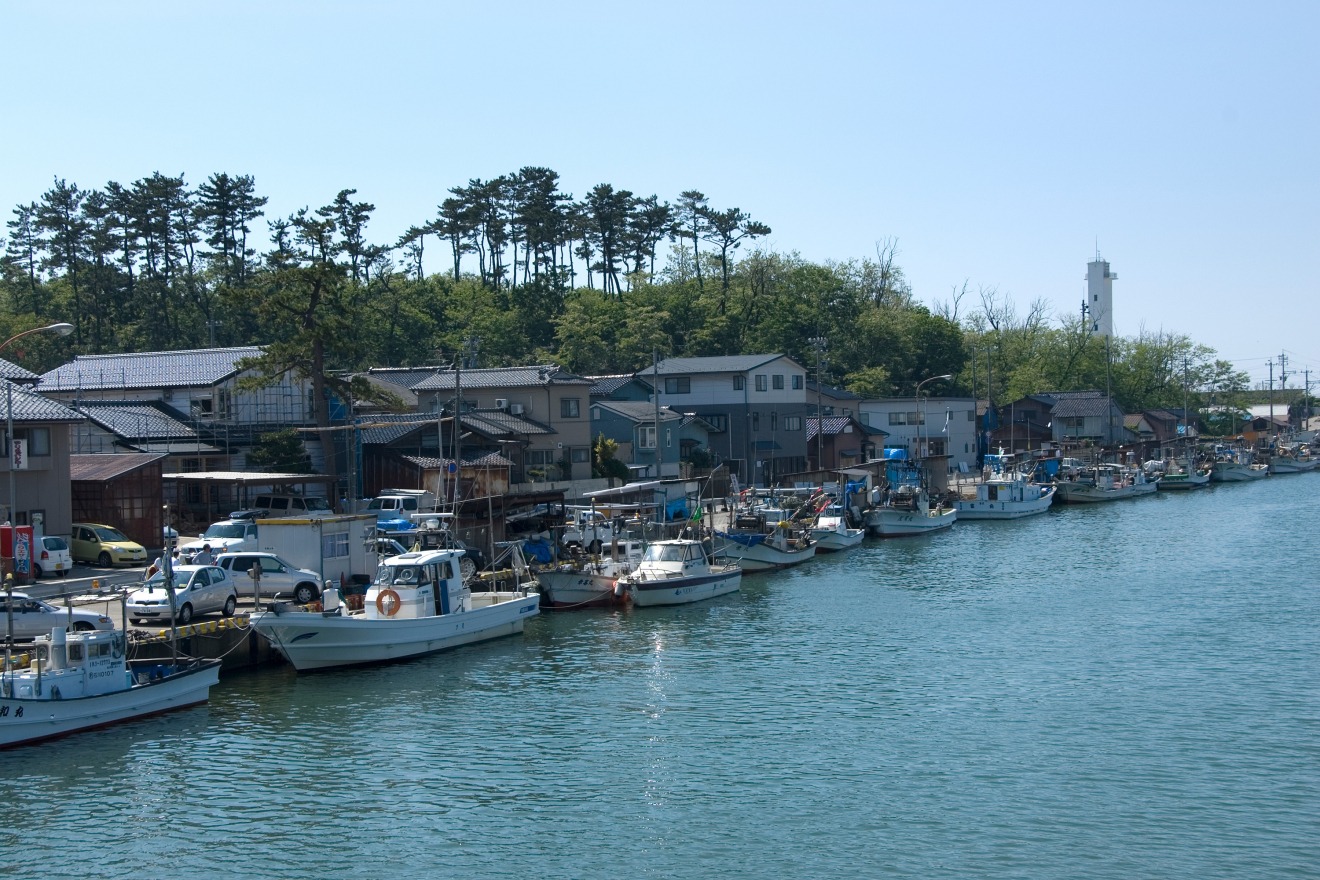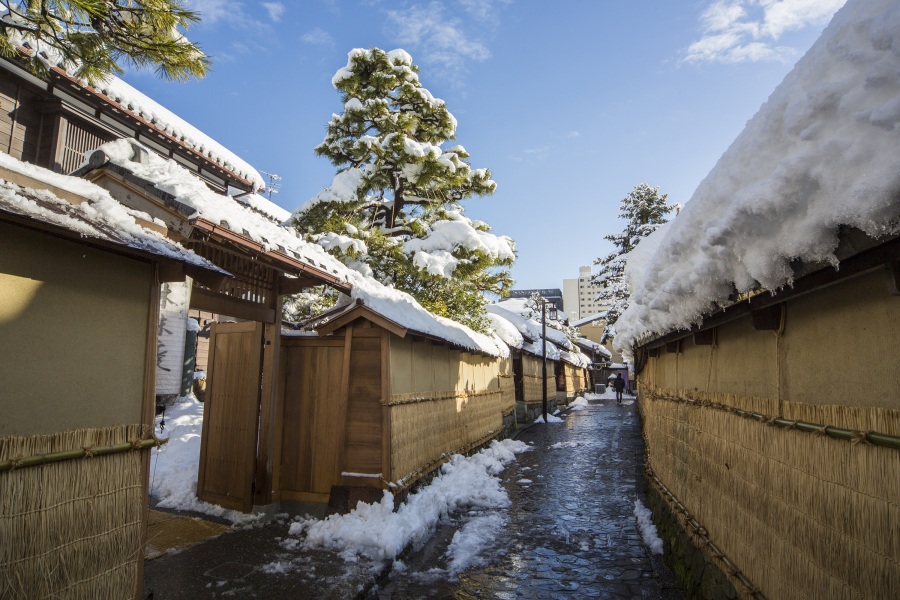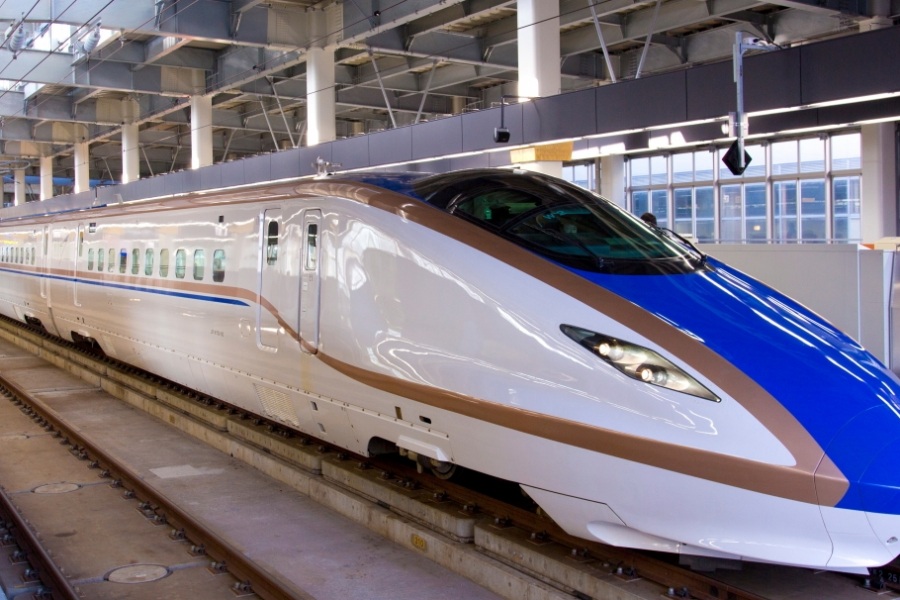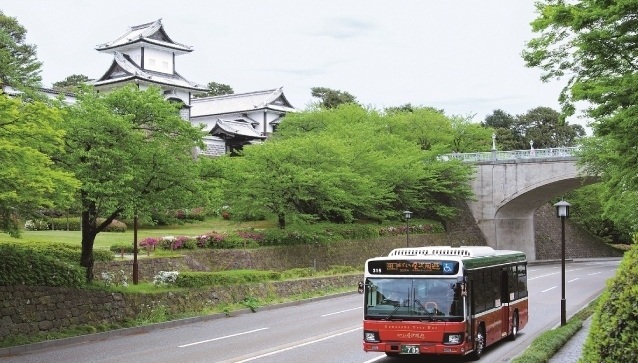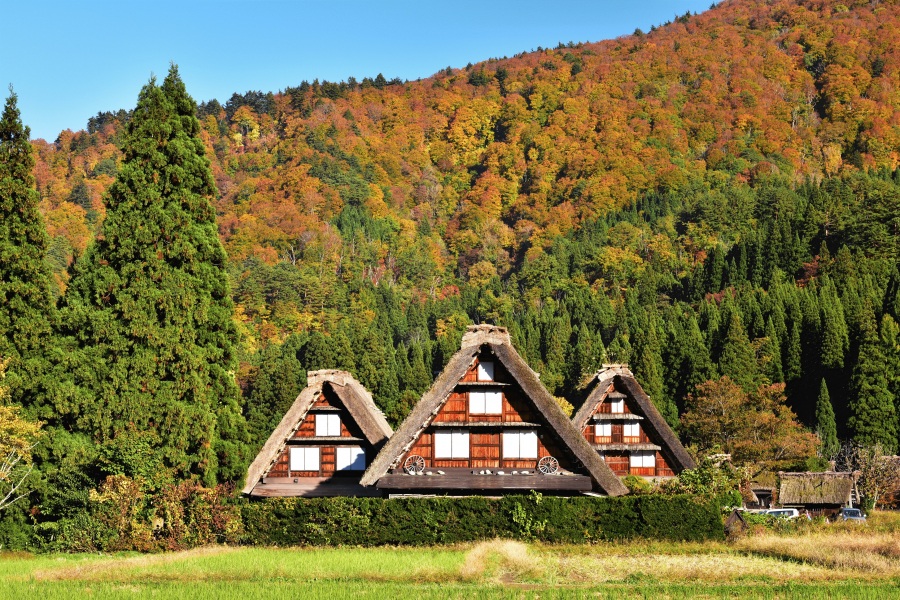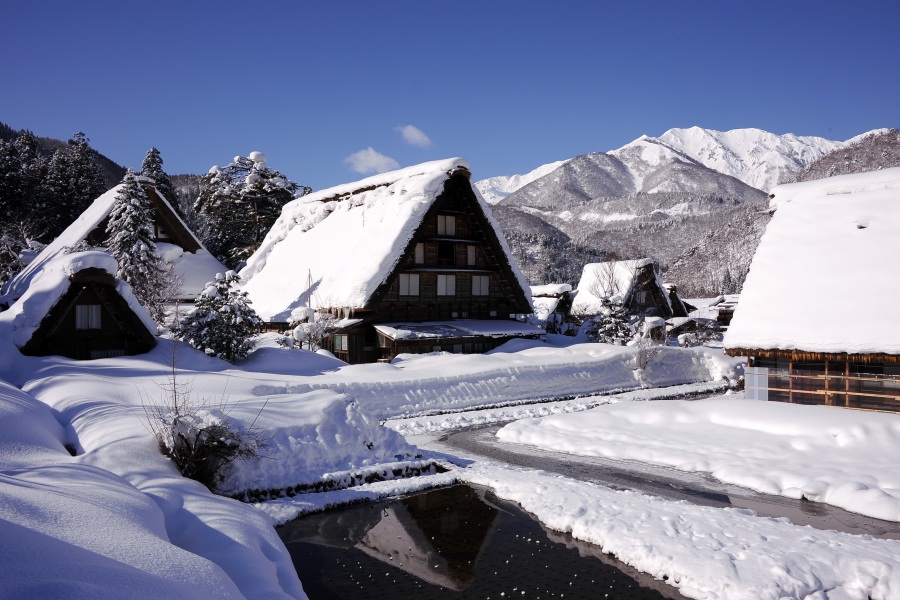15 Recommended Tourist Spots in Kanazawa
What kind of city is Kanazawa? What should I see? For first-time visitors to Kanazawa, we'd like to introduce you to some of the city's must-see attractions. There's so much more to see than just Kenrokuen Garden! Discover your favorite part of Kanazawa. Most of the main tourist attractions are located within a 2km radius of Kanazawa Castle, so you can easily get around on foot or by bus (Kanazawa Loop Bus, regular bus, etc.).
(For information on bus routes and recommendations, check out the tourist support website "Getting Around in Kanazawa"!)
●21st Century Museum of Contemporary Art, Kanazawa
●Yamato Soy sauce & Miso Co.,Ltd.
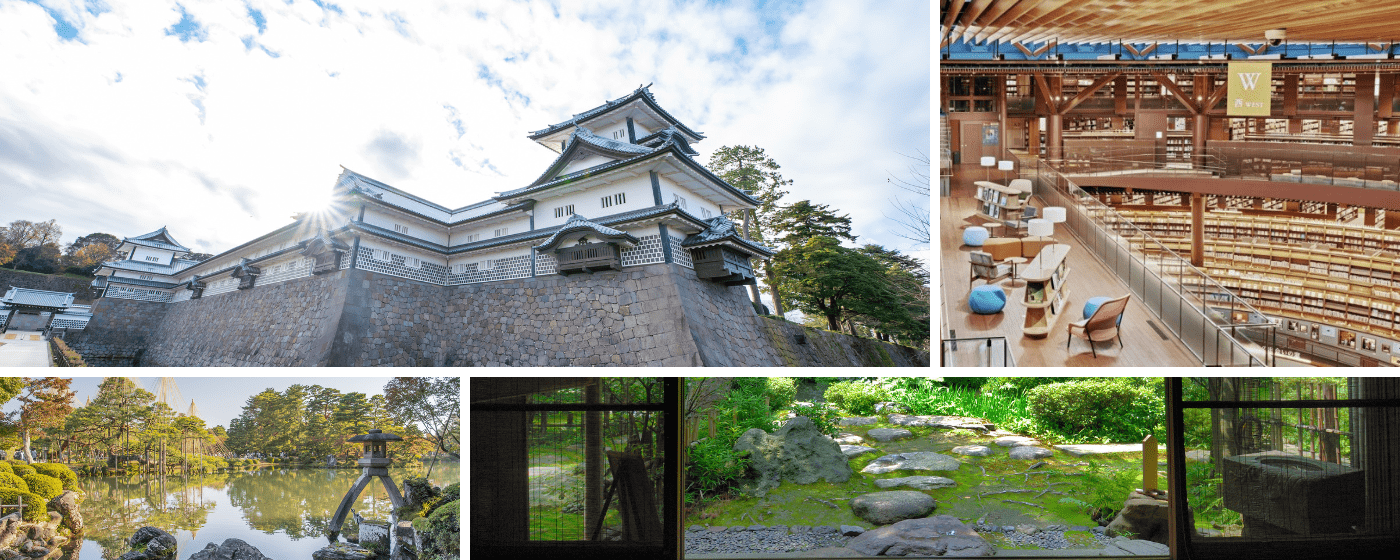
Kenrokuen Garden
~A Beautiful and Famous Garden in the Heart of Kanazawa~
Considered one of Japan’s three most beautiful gardens, Kenrokuen Garden is a must-visit location in Kanazawa. The name Kenrokuen means “having six factors”, representing the attributes which bring out the garden’s stunning beauty: spaciousness, tranquility, artifice, antiquity, water sources and magnificent views.The garden has an area of 11.4 hectares and is located on the heights of the central part of Kanazawa next to Kanazawa Castle. The Maeda family, who ruled the Kaga Domain (the present Ishikawa and Toyama areas) in feudal times, maintained the garden from generation to generation. It is regarded as one of the most beautiful feudal lords' gardens in Japan.
One of Kenrokuen Garden’s most stunning attractions is its large artificial pond called Kasumigaike. Located near the center of the pond is Horai Island. The pond is often seen to symbolize the sea and Horai Island a sacred island out at sea, on which an ageless hermit with miraculous power was believed to live. As a result, the pond and the island were constructed to symbolize long life and eternal prosperity for the lord.
There are many other gorgeous features to enjoy in the garden, including the flowers and trees that grow there, such as plum and cherry blossoms in spring, azaleas and irises early in summer, and colorful red and yellow leaves in autumn.
In Winter, visitors can enjoy the snow-covered landscapes with yukitsuri (which means “snow hanging”). yukitsuri is a traditional technique for protecting the branches of the pine trees in the garden from heavy snow; trees are given support by bamboo poles and rope arranged a captivating conical layout.
| Address | 1, Kenroku-machi, Kanazawa, Ishikawa 920-0936 |
| Access | Approx. 3 minutes on foot from "Kenrokuen Garden・Kanazawa Castle Park" bus stop on the Kanazawa Loop Bus, Hokutetsu Local-Line Bus, and West JR Bus Approx. 3 minutes on foot from "Kenrokuen Shita" bus stop on the Kanazawa Flat Bus Zaimoku route. |
Kanazawa Castle Park
~One of Kanazawa’s key historic landmarks~
Once the home of the Maeda family, who governed the Kaga Domain – present day Ishikawa and Toyama – for over 280 years, Kanazawa Castle is an essential part of the city’s history.
Many features of the castle including the original castle tower were destroyed in two major fires over its long history, and many of them have been rebuilt. Two of its longest lasting features are the Ishikawa-mon Gate, which was rebuilt in 1788, and the Sanjikken Nagaya which was rebuilt in 1858. Both of them have been designated as important cultural assets.
During the time of the Maeda family, Kanazawa Castle was surrounded by moats and had a fort function with loopholes for matchlocks on the outer wall in order to keep it secure from enemies. The beautiful white tiles that grace the roof are weathered lead and the walls made of white mortar with flat tiles attached to it. The stone walls vary in type throughout the castle and it is apparent that many of them were built in separate periods, with the oldest dating back more than 400 years ago.
Prior to Kanazawa Castle and its park’s restoration, it was used for many different purposes. For a time, it was used as base for the Japanese army and then a campus for Kanazawa University before being designated a National Historic Site in 2008.
Hishi Yagura, Gojikken Nagaya, and Hashizume-mon Tsuzuki Yagura (turret and storehouse)
These three stunning features are reproductions of original aspects of the park from over 125 years ago. Hishiyagura is a diamond-shaped turret, Gojikken Nagaya a 90-yard-long warehouse, and Hashizumemon Tsuzuki Yagura a turret designed to protect a nearby gate. Constructed through traditional methods, they offer a glimpse into Kanazawa’s past.
Gyokusen-inmaru Garden
In 1634, the third lord of the Maeda family started to construct the garden. Although it was destroyed at the end of the feudal period, the garden was reconstructed in 2015. If you visit the garden after sunset on Saturdays and designated dates, you can enjoy a captivating lights show.
| Address | |
| Access | Approx. 5 minutes on foot from "Kenrokuen Garden・Kanazawa Castle Park" bus stop on the Kanazawa Loop Bus, Hokutetsu Local-Line Bus, and West JR Bus Approx. 5 minutes on foot from "Kenrokuen Shita" bus stop on the Kanazawa Flat Bus Zaimoku route |
21st Century Museum of Contemporary Art, Kanazawa
~A hub for contemporary art in Kanazawa~
Opened in 2004, the 21st Century Museum of Contemporary Art in Kanazawa stands out compared to more traditional art museums. The museum features a captivating disc-like design, as if it were a UFO touching down in the middle of Kanazawa. All the walls are made of glass and the building features five gates, all pointing towards different parts of the city.
The museum exhibits experimental contemporary art that visitors can touch or sit on and is perfect for children and adults alike. Some of museum’s highlights include commissioned works, which are integrated into the building’s unique design.
The 21st Century Museum of Contemporary Art excels at offering visitors unique experiences that can’t be found anywhere else. Highlights include Leandro Erlich's The Swimming Pool, which enables visitors to feel as if they’re standing at the bottom of a swimming pool, and a wall decorated with flowers gathered from the suburbs of Kanazawa.
Additionally, the museum's shop offers a wide variety of products, such as museum memorabilia, accessories, and selected goods.
| Address | 1-2-1, Hirosaka, Kanazawa, Ishikawa 920-8509 |
| Access | Approx. 1 minutes on foot from "Hirosaka・21st Century Museum" bus stop on the Kanazawa Loop Bus, Hokutetsu Local-Line Bus, and West JR Bus |
Omicho Market
~Discover Kanazawa’s most famous fish market~
Established during the Edo Period, Omicho Market has formed an essential part of Kanazawa’s food culture for more than 300 years.
The sprawling market features more than 170 stores, including a large number of fishmongers that sell freshly caught seafood from the Sea of Japan. There are also fruit and vegetables stores that sell unique local produce, marine product stores, clothing stores, grocery stores and restaurants.
Particularly well-revered are the crab, yellowtail and shrimp from the Sea of Japan that are sold around November. Because of this, the market is normally crowded with tourists and locals alike during this time of year.
Another key attraction of the market is Omicho Ichibakan. The refurbished building features a number of popular restaurants and stores that are worth stopping by during your trip to the market.
| Address | 50, Kamiomicho, Kanazawa, Ishikawa 920-0905 |
| Access | A 12-minute walk from JR Kanazawa Station East Exit (Kenrokuen Exit) Approx. 1 minutes on foot from "Musashigatsuji・Omi-cho Market" bus stop on the Kanazawa Loop Bus, Hokutetsu Local-Line Bus, and West JR Bus Approx. 1 minutes on foot from "Musashigatsuji・Omi-cho Market" bus stop on the Kanazawa Flat Bus Zaimoku route |
Nagamachi District
~A stunningly preserved samurai district in the center of Kanazawa~
Kanazawa was once the economic and administrative center of the Kaga Domain (feudal-era Ishikawa Prefecture). Over the course of the Edo period, it grew rapidly – its population growing to over 100,000 – transforming it into one of the largest castle towns in feudal Japan. Its population rivaled that of Rome and Madrid at the time.
With the castle at its center, the town was designed with both its defensive and economic aspects in mind. Members of the upper classes were often given allotments of land for their residences close to that of the feudal lord (daimyo) in the castle, while commoners lived near the town’s edges.
Nagamachi District, located near the center of town, was where the middle to high-ranking samurais lived – which is why it’s sometimes described as the city’s samurai district. Nagamachi literally means “Long Town,” though it’s more likely that it actually takes its name from the surname of a local family, the Cho, which means “long” which can also be pronounced “naga.”
Nagamachi District’s historical value lies in its unusual state of preservation. It has escaped large-scale fires, including the firebombing that damaged other large cities such as Tokyo and Osaka during World War II. Accordingly, it retains many features from the Edo period: narrow streets, a drainage and water supply system that remains in use, and restored samurai houses.
Many of these residences maintain their original earthen walls (tsuchi-kabe), which are still covered in the winter with straw mats to protect them from frost and subsequent cracking. A walk through Nagamachi, where an Edo-period atmosphere still lingers, offers a glimpse into the heritage of Kanazawa and Japan.
| Address | Nagamachi, Kanazawa, Ishikawa, 920-0865 |
| Access | 5 minutes' walk from "Korinbo" bus stop by Hokutetsu Local-Line bus and West JR bus. Short walk from "Nagamachi Bukeyashiki Ato" bus st |
3 Chaya Districts
~Three teahouse districts, each with different attractions~
There are three teahouse districts in Kanazawa: Higashi Chaya District, Kazuemachi Chaya District, and Nishi Chaya District. Many of the buildings here date back to the Edo period, as the area was spared from wartime damage. Explore these traditional streets and find your favorite teahouse district.
●Higashi Chaya District
| Address | Higashiyama, Kanazawa, Ishikawa 920-0831 |
| Access | Approx. 5 minutes on foot from "Hashiba-cho" bus stop on the Kanazawa Loop Bus, Hokutetsu Local-Line Bus, and West JR Bus Approx. 5 minutes on foot from "Asanogawa Ohashi Bridge" bus stop on the Kanazawa Flat Bus Zaimoku route. |
●Kazuemachi Chaya District
| Address | Kazuemachi, Kanazawa, Ishikawa 920-0908 |
| Access | Approx. 5 minutes on foot from "Hashiba-cho" bus stop on the Kanazawa Loop Bus, Hokutetsu Local-Line Bus, and West JR Bus Approx. 5 minutes on foot from "Asanogawa Ohashi Bridge" bus stop on the Kanazawa Flat Bus Zaimoku route. |
●Nishi Chaya District
| Address | 2-25-1, No-machi, Kanazawa, Ishikawa 921-8031 |
| Access | Approx. 3 minutes on foot from "Hirokoji" bus stop on the Kanazawa Loop Bus, Hokutetsu Local-Line Bus, and West JR Bus Approx. 1 minutes on foot from "Nishi Chaya District" bus stop on the Kanazawa Flat Bus Nagamachi route |
Oyama Jinja Shrine
~The "Shinmon" gate, which shows the Guillaman, is stunningly beautiful!~
The shrine that enshrines Maeda Toshiie was moved to the present location in 1873. The main gate is a peculiar mix of traditional Japanese, Chinese, and European religious architectural elements. This gate, which was designated as Japan's important cultural assets, was completed in 1875.
One of the highlights of Oyama Shrine is the garden in round-the-pond style with an artificial island and bridge in the images of old musical instruments, such as the biwa (Japanese short-necked fretted lute).
It is illuminated from after sunset until 22:00 at night, and the way it floats in the light creates a fantastic atmosphere. Located between Kenrokuen Garden and Kanazawa Castle and the Nagamachi District and downtown area, it is an easy stopover during sightseeing.
| Address | 11-1, Oyama-machi, Kanazawa, Ishikawa 920-0918 |
| Access | Approx. 3 minutes from the "Minami-cho/Oyama Shrine" bus stop by Kanazawa Loop Bus, Hokutetsu Local-Line Bus, or West JR Bus |
National Crafts Museum
~Digging Deeper into Kogei~
The National Crafts Museum is the only national museum specializing in crafts and the first national museum located on the Sea of Japan side of the country, but there is little wonder how it came to Kanazawa. Kanazawa has a long history of supporting the arts dating back to the ruling Maeda family’s patronage of the arts and culture starting over 400 years ago. Since then, the city has thrived as a center for Kogei, or traditional Japanese Crafts. Kanazawa is known as the “City of Crafts.” In fact, in 2009, UNESCO designated Kanazawa as a city of Crafts and Folk Art in its Creative Cities Network which eventually led to the relocation of the museum from Tokyo in 2020.
Housed in two historic Meiji-era (1868-1912) buildings formerly used by the military and restored with their original exteriors, the National Crafts Museum holds more than 4,000 craft and graphic design artworks primarily originating from the 20th century and is home to the finest examples of Japanese traditional crafts in the nation, including many pieces created by Japan’s Living National Treasures, the designation for master craftsmen of a specific traditional art or craft. The National Crafts Museum is located near Kenrokuen Garden, in an area that is home to several of Kanazawa’s museums.
| Address | 3-2, Dewa-machi, Kanazawa, Ishikawa 920-0963 |
| Access | About 7~9 minutes by foot from the Hirosaka・21st Century Museum bus stop on the KANAZAWA LOOP BUS route. |
Gyokusen-en Garden
~A historic garden with ties to the Kaga Clan, predating Kenrokuen by about 120 years~
Wakita Naokata, vassal in the Kaga Clan, started designing and constructing the garden in the middle of the 17th century, and four generations carried on the landscaping of the garden. Naokata was born in Korea and raised by the Maeda family in Japan by a twist of fate. There are a large number of plants in the garden, including a huge Korean pentaphylla pine that Naokata and his father raised after they obtained the seed from Korea.
A visitor can enjoy a powdered green tea and experience a Japanese traditional tea ceremony subject to reservation.
| Address | 8-3 Kosho-machi, Kanazawa, Ishikawa 920-0932 |
| Access | Approx. 2 minutes on foot from "Kenrokuen Garden・Kanazawa Castle Park" bus stop on the Kanazawa Loop Bus, Hokutetsu Local-Line Bus, and West JR Bus Approx. 2 minutes on foot from "Kenrokuen Shita" bus stop on the Kanazawa Flat Bus Zaimoku route |
Ishikawa Prefectural Library
~A space to enjoy discovering books~
Ishikawa Prefectural Library opened in July 2022, offering a rich collection of approximately 1.1 million books, diverse events, workshops, digital art experiences, and hands-on activities. Designed by the renowned architect Mitsuru Sendata and his firm, Environmental Design Institute, the library boasts a distinctive Exterior resembling pages of a book and striking ceilings adorned with vermilion and blue hues.
Inside, visitors will discover unique spaces such as a circular reading area featuring carefully selected books on 12 familiar themes, "Bookrium" – a digital art installation visualizing book collections as a universe, a corridor-style reading space called "Ring," and the "Sato no Megumi, Bunka no Kaori – Ishikawa Collection" which houses materials related to biodiversity and cultural diversity. The library also offers a "Children's Area" for family fun, a "Bridge" where visitors can relax in the open space, and over 100 types of unique chairs, totaling around 500 seats, allowing visitors to choose a seat that suits their mood and reading materials.
| Address | 2-43-1, Kodatsuno, Kanazawa, Ishikawa 920-0934 |
| Access | A short walk from the "Ishikawa Prefectural Library" or "Sakiura/Ishikawa Prefectural Library Exit" bus stop on the Hokutetsu Local-Line Bus |
Seisonkaku Villa
~An exquisite mansion gifted to the lord's mother~
Seisonkaku is a villa that the 13th lord of the Maeda family built for his mother in Kenrokuen Garden in 1863. Fine techniques in a wide variety are used for the inner pillars and walls of Seisonkaku. These techniques include a wooden panel with openwork carvings of flowers and birds and a coffered ceiling for the guest chamber called "Ekken-no-ma." From these, visitors will know the status of the then Maeda family.
Furthermore, Seisonkaku exhibits articles with a long and distinguished history, such as dolls for the Japanese Girls' Festival and furniture.
| Address | 1-2 Kenroku-machi, Kanazawa, Ishikawa 920-0936 |
| Access | Approx. 2 minutes on foot from "Dewa-machi" bus stop on the Hokutetsu Local-Line Bus |
D.T. Suzuki Museum
~Learn about the life and teachings of Kanazawa’s most famed philosopher~
Known around the world, Daisetz Suzuki – also known as D.T. Suzuki – is one of Japan’s most famous Buddhist philosophers. His essays and teaching were incredibly influential in spreading Buddhist philosophy to the West.
Born in Kanazawa, the philosopher is commemorated in city through the D.T. Suzuki Museum. The museum is located in the area of the city where D.T. Suzuki was born and comprises three wings – the Entrance Wing, the Exhibition Space Wing and the Contemplation Space Wing – as well as three gardens – the Vestibule Garden, the Water Mirror Garden and the Roji Garden.
In addition to containing many exhibits relating to the life of D.T. Suzuki, the museum also serves as a place of reflection for visitors as they contemplate his teachings.
| Address | 3-4-20 Honda-machi, Kanazawa, Ishikawa 920-0964 |
| Access | Approx. 5 minutes on foot from "Honda-machi" bus stop on the Kanazawa Loop Bus, Hokutetsu Local-Line Bus |
Yuwaku Onsen(Hot Springs)
~An Off-the-beaten-path Hot Springs Village in Kanazawa city~
Visitors who want to enjoy a secluded and relaxing visit to a Japanese onsen (hot springs) need not even leave the Kanazawa city limits. Just a 30-minute drive from Kanazawa Station is Yuwaku Onsen, a collection of ryokan inns and a public hot springs bath.
Onsen hot springs baths have long been a source of relaxation and general wellness for Japanese people, and a luxurious stay at a ryokan is on the bucket list of many visitors to Japan for their world-class hospitality and sumptuous meals. Spend the night at one of the nine ryokan of Yuwaku Onsen and enjoy the traditional delights of this unique style of accommodation. If you prefer to make a day trip out of your visit, the Shirasagi no Yu public bath is open to those not staying in a ryokan overnight, and ashiyu footbaths for additional indulgence to allay weary feet after a day of travel.
| Address | Yuwaku-machi, Kanazawa, Ishikawa 920-1123 |
| Access | Get off the Hokutetsu Local-Line Bus at "Yuwaku Onsen" bus stop |
Yamato Soy sauce & Miso Co.,Ltd.
~You can see, feel, and enjoy fermented foods!~
The Yamato Soy Miso head office and manufacturing plant "Kouji Park" was created for you to experience fermented food culture and the power of malt and take it home with you. The Hishihogura, the head office's direct sales store, the Hakko Bijin Shokudo Restaurant, where you can enjoy seasonal fermented food lunches, and the Koji-kura, where you can experience popular workshops such as free Koji Park tours, miso making (limited season), and salted malt making (reservation required).
All soy sauce, miso, and amazake are available for tasting and sampling, so you can find your favorite fermented food. Why not take a break and enjoy the atmosphere near the port while tasting the popular soy sauce soft-serve ice cream.
| Address | 4E-170, Ono, Kanazawa, Ishikawa 920-0331 |
| Access | 5-minute walk from "Ono" bus stop on the Hokutetsu Local-Line bus, 3-minute walk from "Ono Port" bus stop. |
